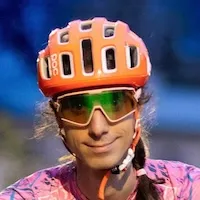Destination Tauern - Part 2
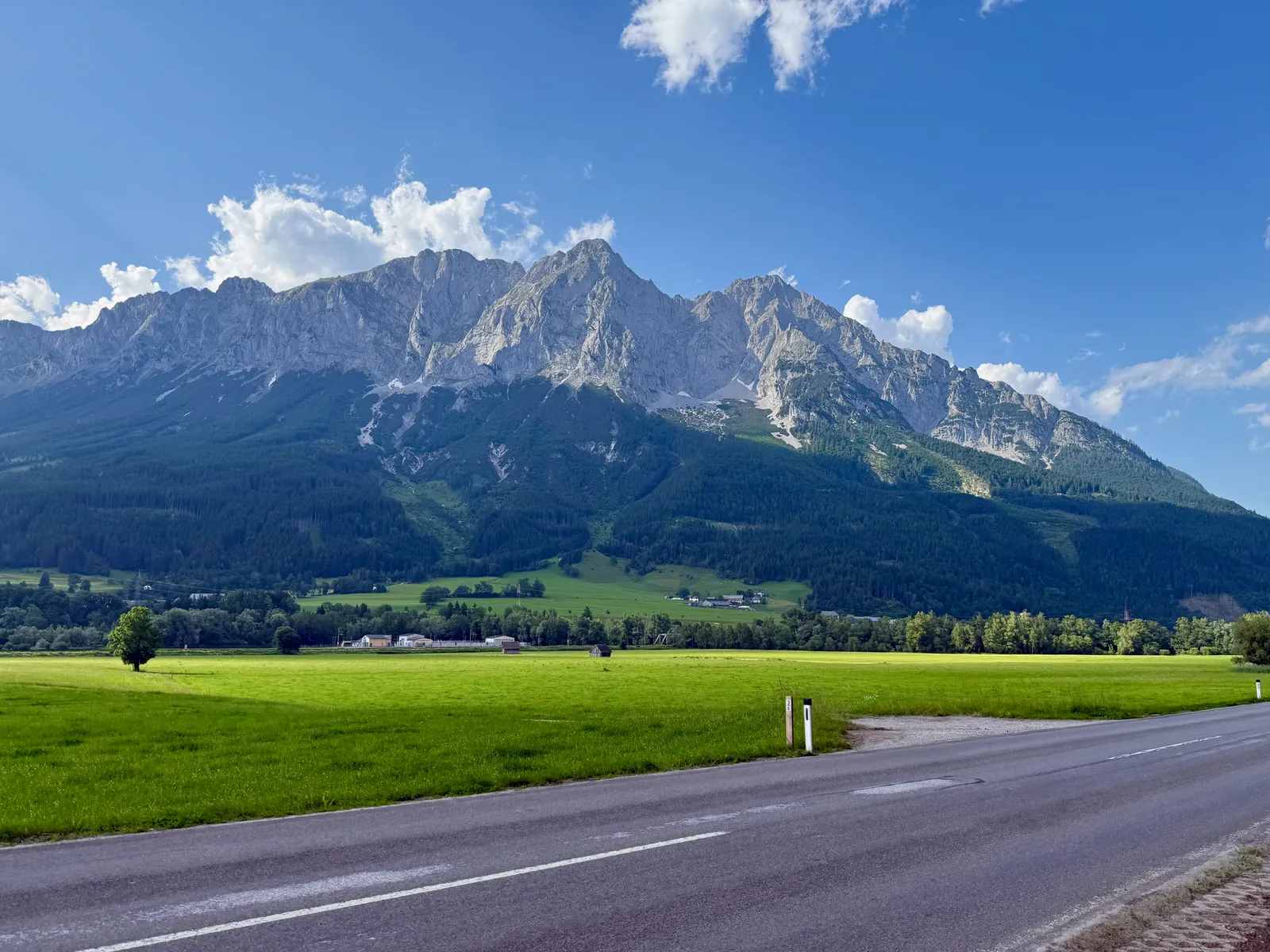
Day 3 - Spittal an der Drau to Irdning
I woke up already tired. Not a good omen. After my morning routine, I picked at the leftover pizza from the night before, chewing cautiously. I was hungry, but my stomach had other ideas. Every bite felt forced. I could barely eat.
Given yesterday’s disposition, I pulled up my planned route with a knot in my chest. Another 150 kilometers, another 3,000 meters of climbing. It didn’t look realistic. Especially not with a stomach that was barely cooperating. The idea of tackling a climb that pitched to 17% felt laughable at least. On top of that, storms were forecast for 3 p.m. in the very area I was headed. The thought of another eight hours out there, only to get battered by weather, sealed my decision: I needed to bail on part of the plan.
Studying the map, I spotted a smaller, alternative crossing into the Enns valley. Instead of the brutal Sölkpass, I could take the lower Tauern Pass. From there, I’d descend to Radstadt, and after roughly 90 kilometers and 2,000 meters of climbing, hop on a train to Irdning, close to my booked accommodation. It was still a demanding ride, but one I could manage. A solid plan. I uploaded the new route to my Wahoo, left half my pizza untouched, and set off to slowly spin through the town.
The day, however, was not going to give me an easy start. Barely five kilometers in, I was greeted with a “bikes not allowed” sign. Perfect. I scrambled through the map for alternatives. One possible detour would cost me five kilometers, another so-called cycling route carried the exact same ban. Fantastic.
I circled the plaza, staring at the phone screen in growing frustration, until I finally muttered: If not by hook, then by a crook. The sign barred me from the road, fine. Then I’d ride the sidewalk. The pavement was narrow and the gradient steep, but it was early Sunday morning, and no one else was out. Most of the town seemed to be still asleep. I pushed up undisturbed to the next intersection, where the ban ended, and quickly merged back into the road.
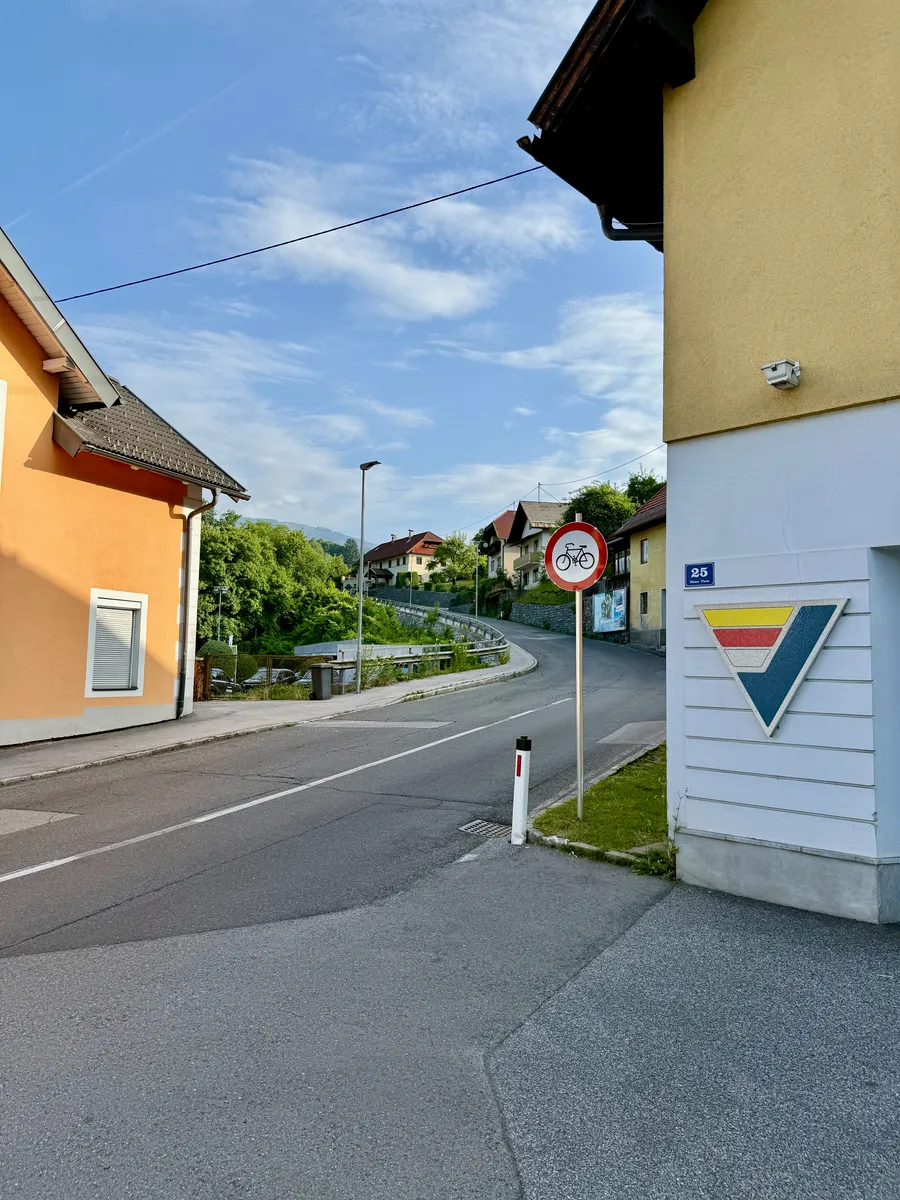
Climbing out of the city, I entered the woods. The first hours of the ride led through small villages strung along the valley’s edge. The road rolled up and down, with short, sharp ramps followed by brief but equally steep descents. They bit into me hard. With no fuel in my legs and only scraps in my stomach, each incline felt brutal. My pace was painfully slow. I was hurting.
I stayed present, aware of my body, the rhythm of my breath. I rode as lightly as I was able to - the most I could manage was the very upper limit of my usual endurance pace. Nothing more Thankfully, the traffic was sparse. Even when the road rejoined the valley floor, most vehicles favored the highway that soared overhead on massive pylons, leaving me in relative calm.
Hoping for an energy spark, I stopped at a gas station for coffee. At the counter, a small plum cake in the fridge caught my eye. Homemade, the cashier said. I hesitated, then told myself: girl’s gotta eat. I ordered both. The cappuccino offered a warm comfort. I ate the cake slowly, cautiously. My stomach protested, growling in discontent, but at least it didn’t try to throw it back up. A small win.
I thanked the cashier, clipped back in, and rolled on. Soon, the road tilted upwards toward Innerkrems. The valley narrowed, the air grew even quieter, and soon I found myself in a tiny ski village asleep in the off-season. Innerkrems also marks a beginning of Austria’s another great Alpine roads: the Nockalmstrasse. Not today, though. Exhaustion, the clock, and the storm warnings made the decision for me. I’ll come back for it.
When you ride bonked, heavily bonked, with your stomach in revolt, every fiber of your body screams at you to stop. Your legs beg for mercy, your gut twists, and you can barely hold the ragged edge of your endurance zone. Yet your mind keeps urging you to go faster, because it remembers a different rhythm, a different kind of speed. It becomes an impossible battle: body against will, weakness against pride.
So you settle into a turtlish pace, rolling up the valley almost alone, with hardly a car in sight. Each pedal stroke is a small act of defiance. You win by not giving up to the little demon that whisperas, calling you a weakling. You win by carrying on, slow as you are. And most of all, you win against your old self. The one who once demanded that every climb be ridden full gas, at all costs. Not anymore.
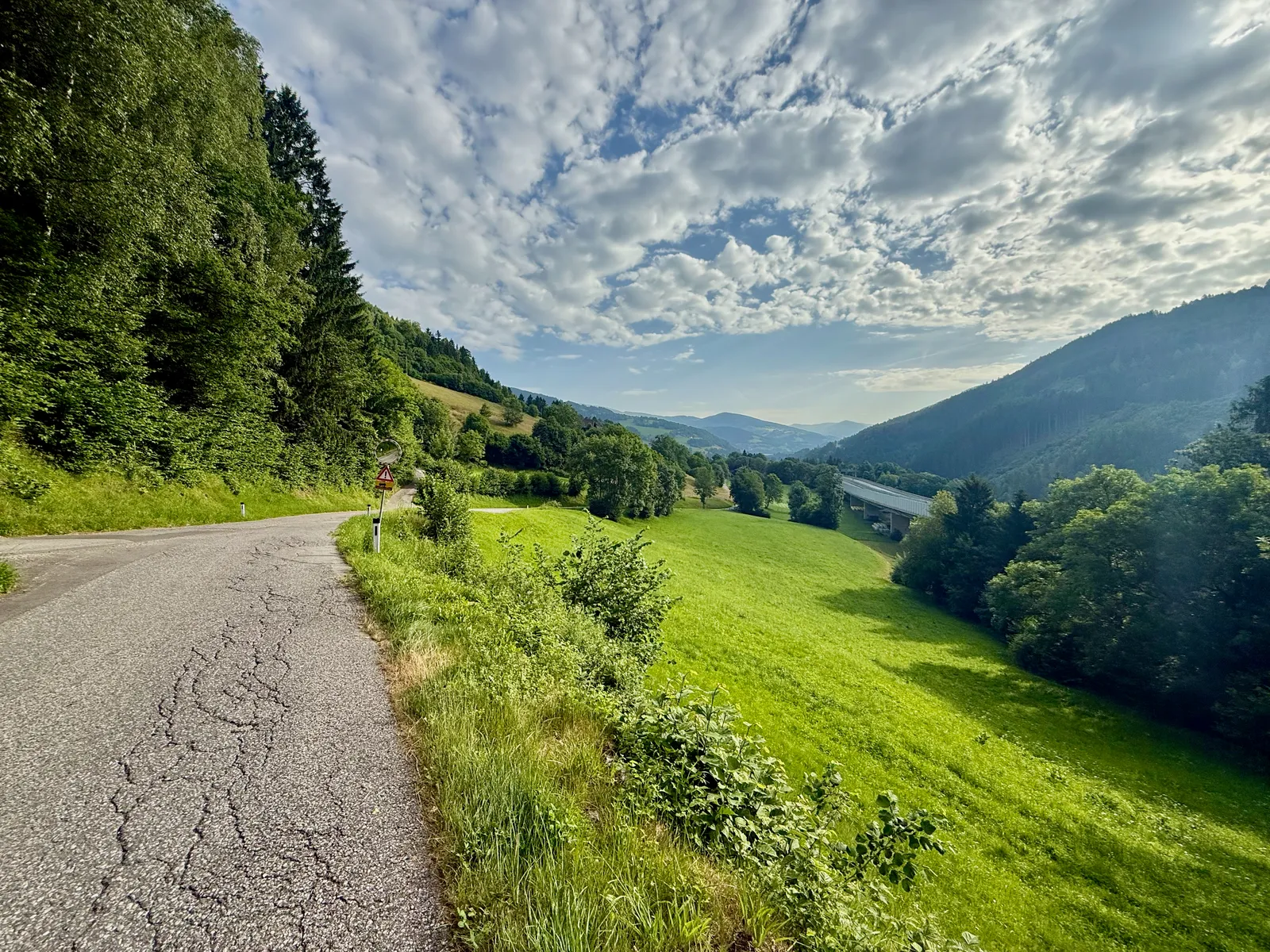
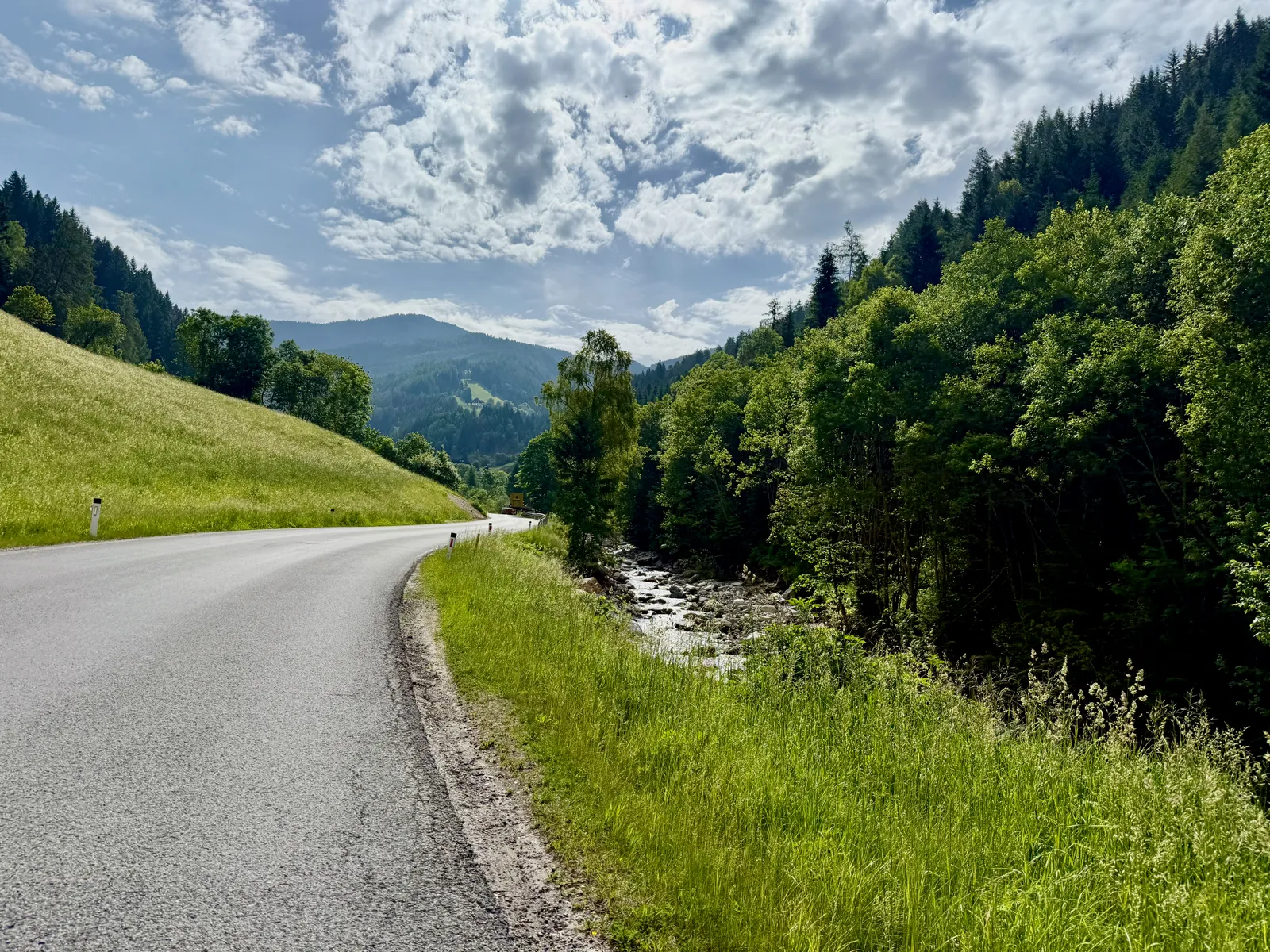
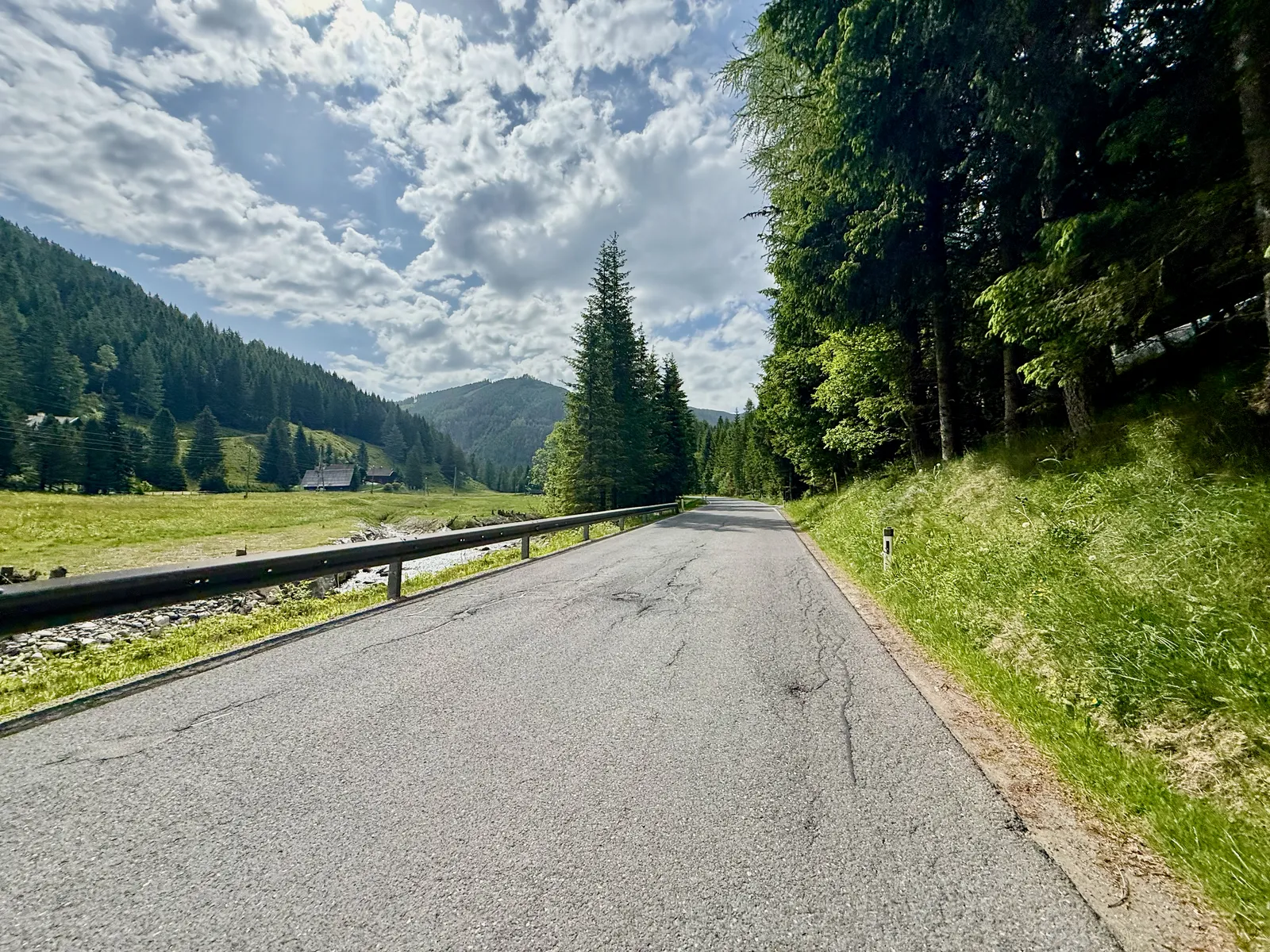
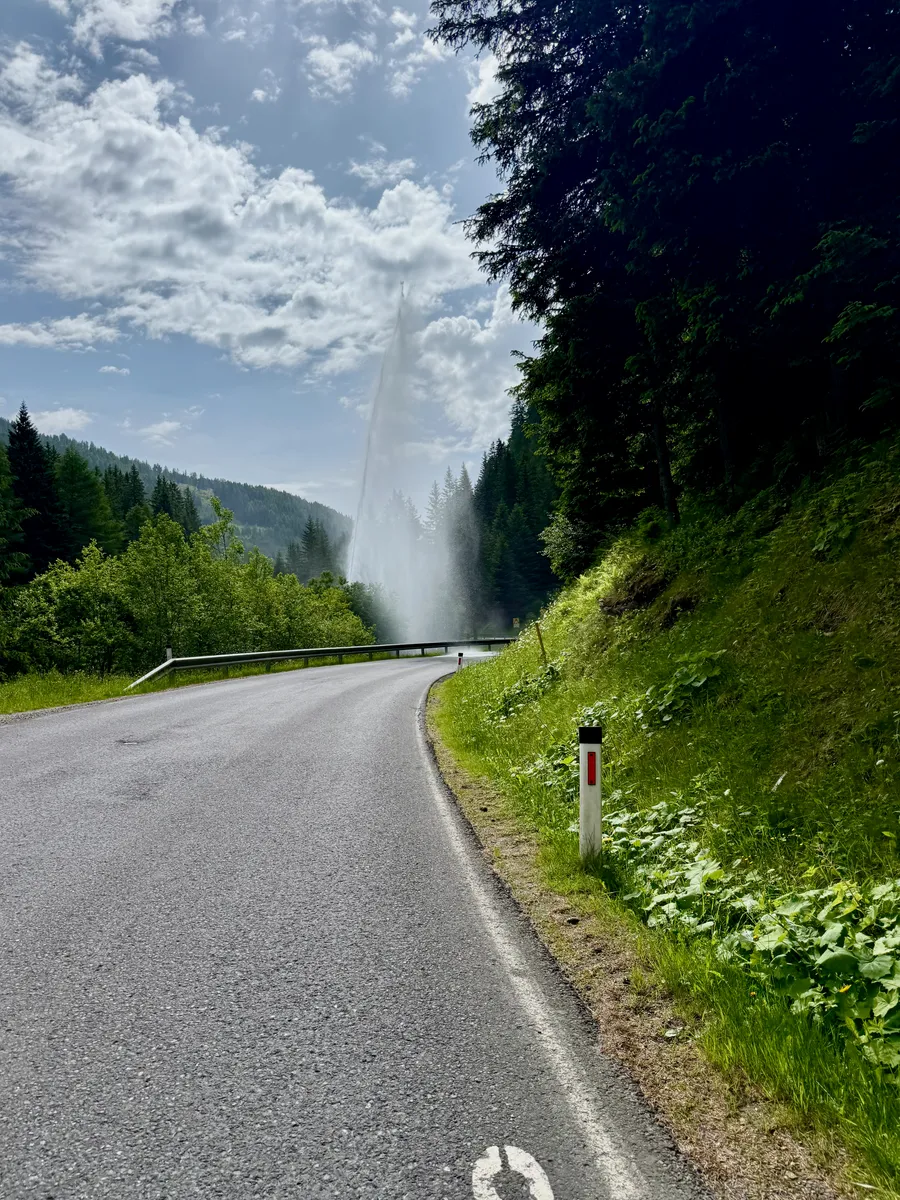
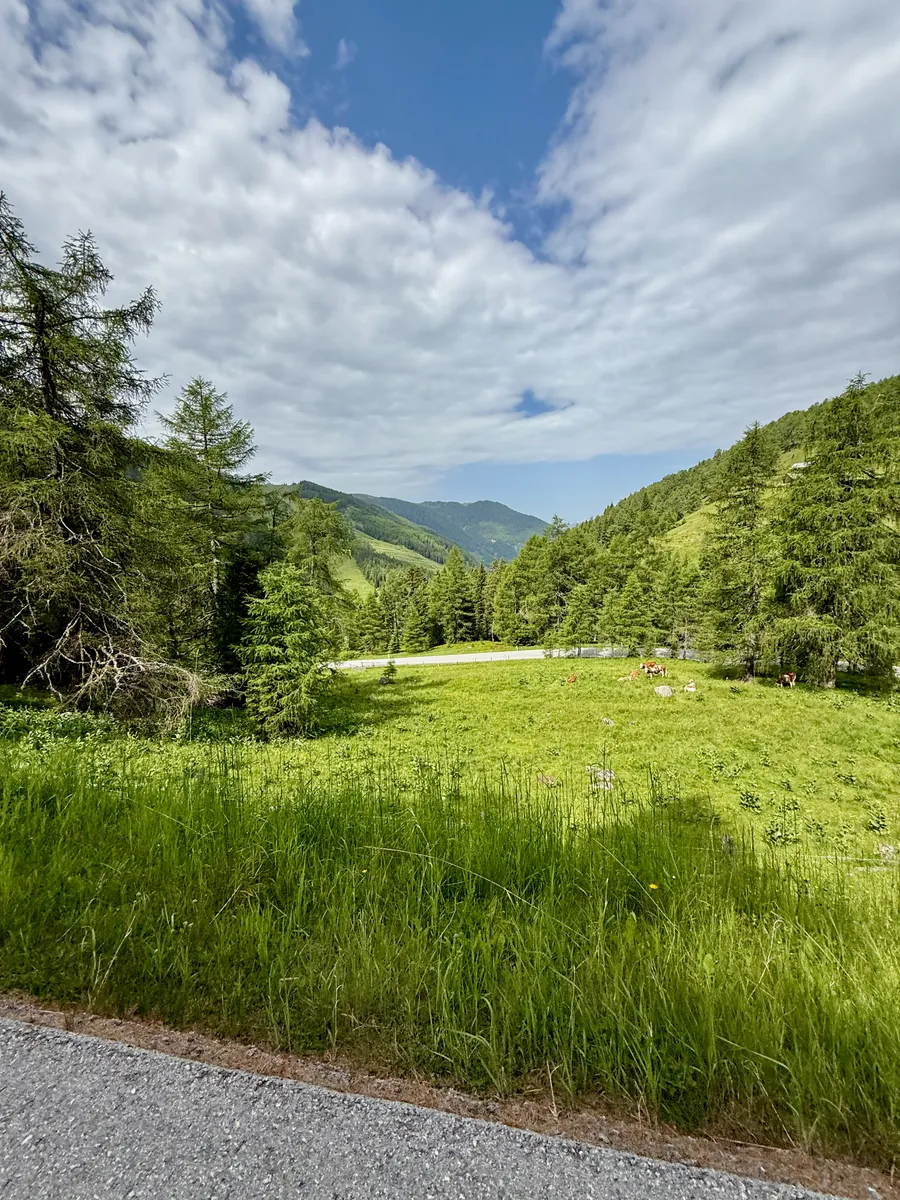
After passing through Innerkrems, the road reared up for a few short, punchy ramps, carrying me above the village. A tight sequence of steep turns delivered me to the pass on the Carinthia – Salzburg border. The view on the other side was pleasant, though not spectacular. Without pause, I slipped from climb into descent.
And what a descent it was. Just below the pass, a tiny hamlet opened into a wide alpine pasture. The narrow road unfolded like a perfectly profiled rollercoaster - smooth, flowing, and inviting speed without ever tipping into recklessness. Broad curves and a forgiving grade let me release the brakes, lean deep into the turns, and trust the road to dictate my pace.
The winding ribbon of tarmac carried me down through sunlit pastures, then into a shaded forest and a scattering of hamlets, finally delivering me to Pichlersdorf. There the second big climb of the day began, ramping steeply past Schloss Moosham before easing off and joining the Tauernpass road.
I detoured briefly through the little town of Mauterndorf, where a fountain below the castle offered refreshment. Dozens of mugs hung on the wall beside it, waiting for tourists, but I filled my own bottles instead, ate a banana, and set off again.
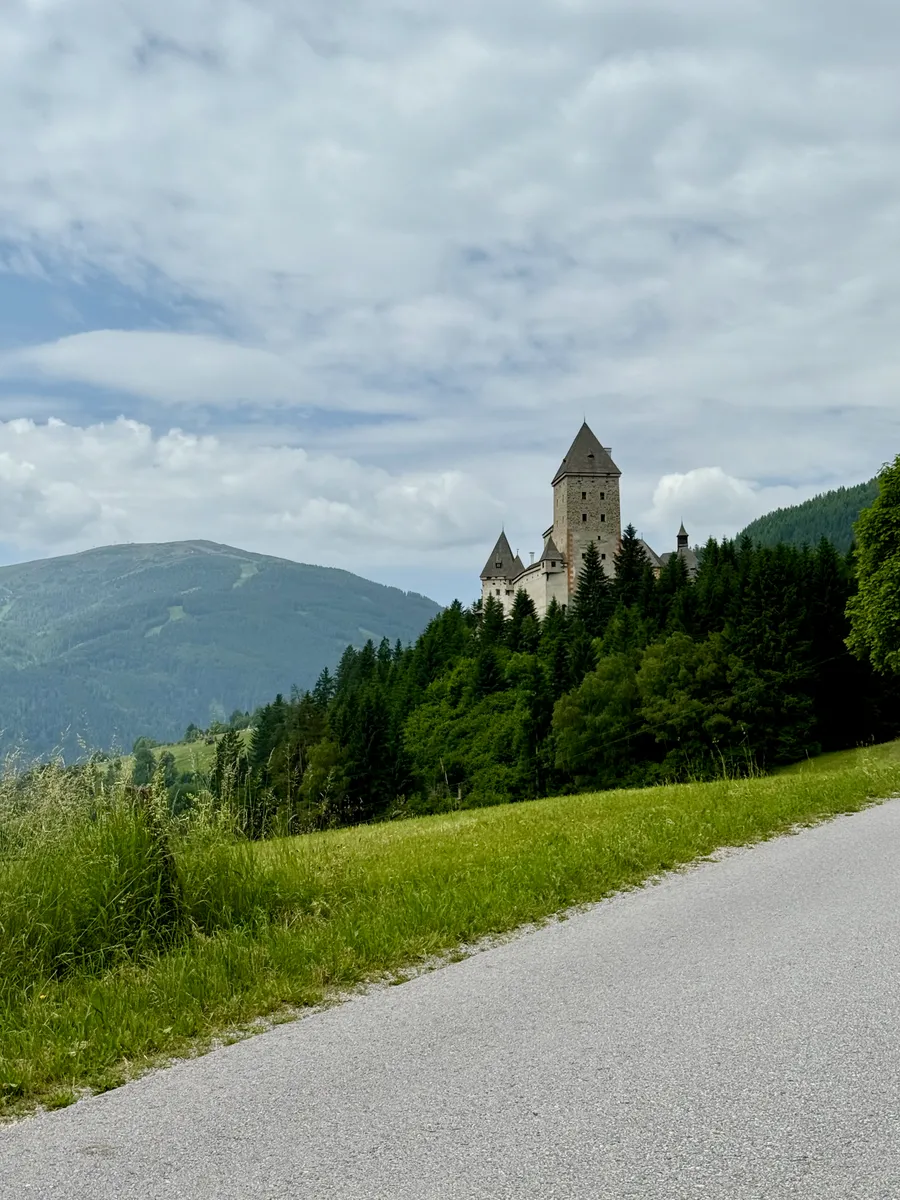
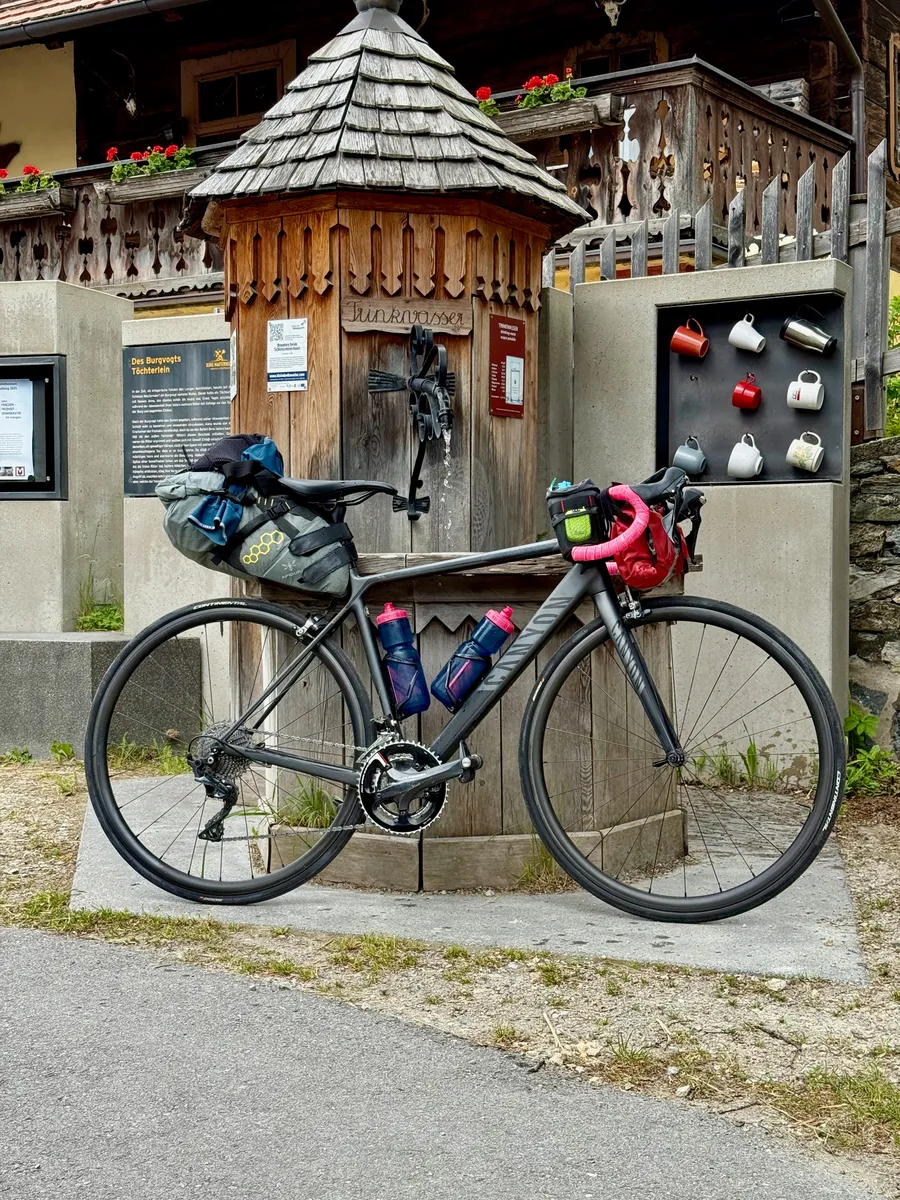
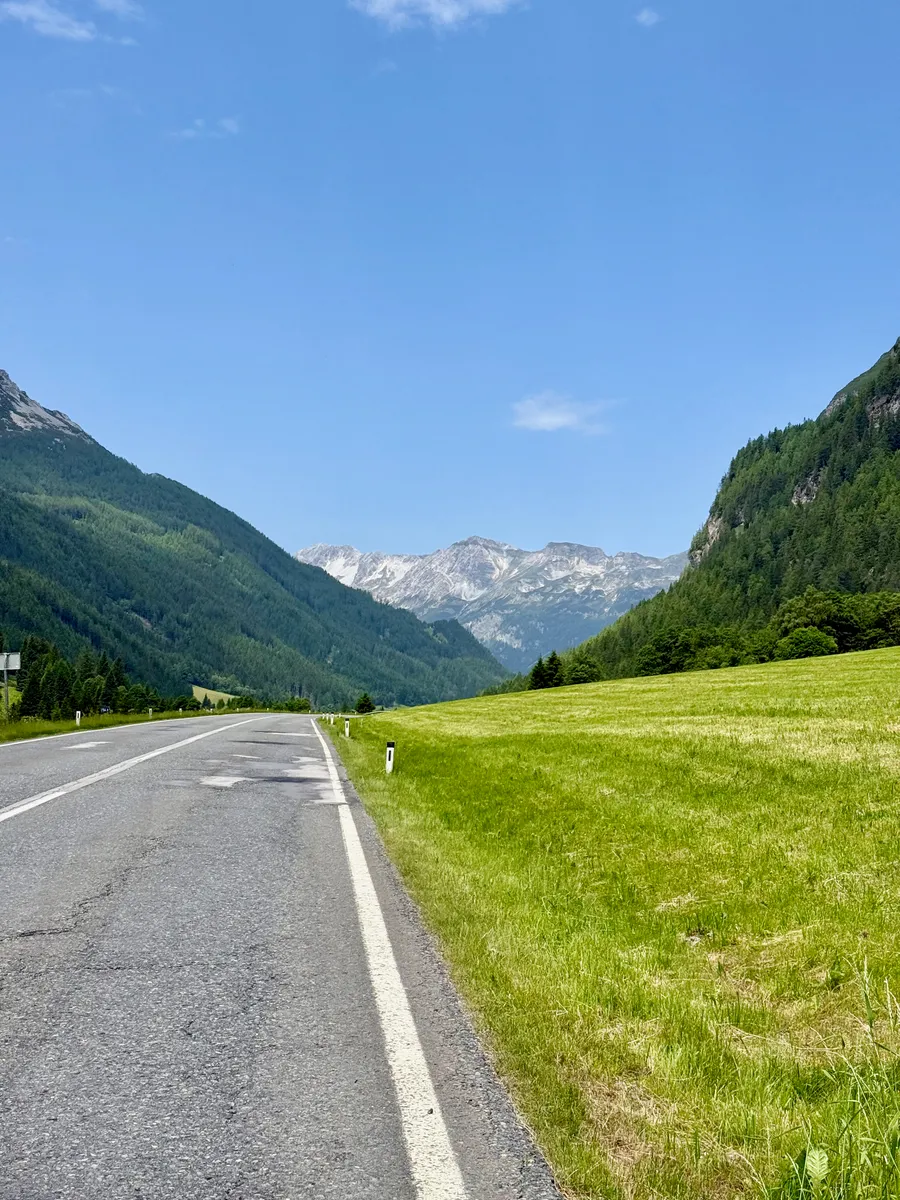
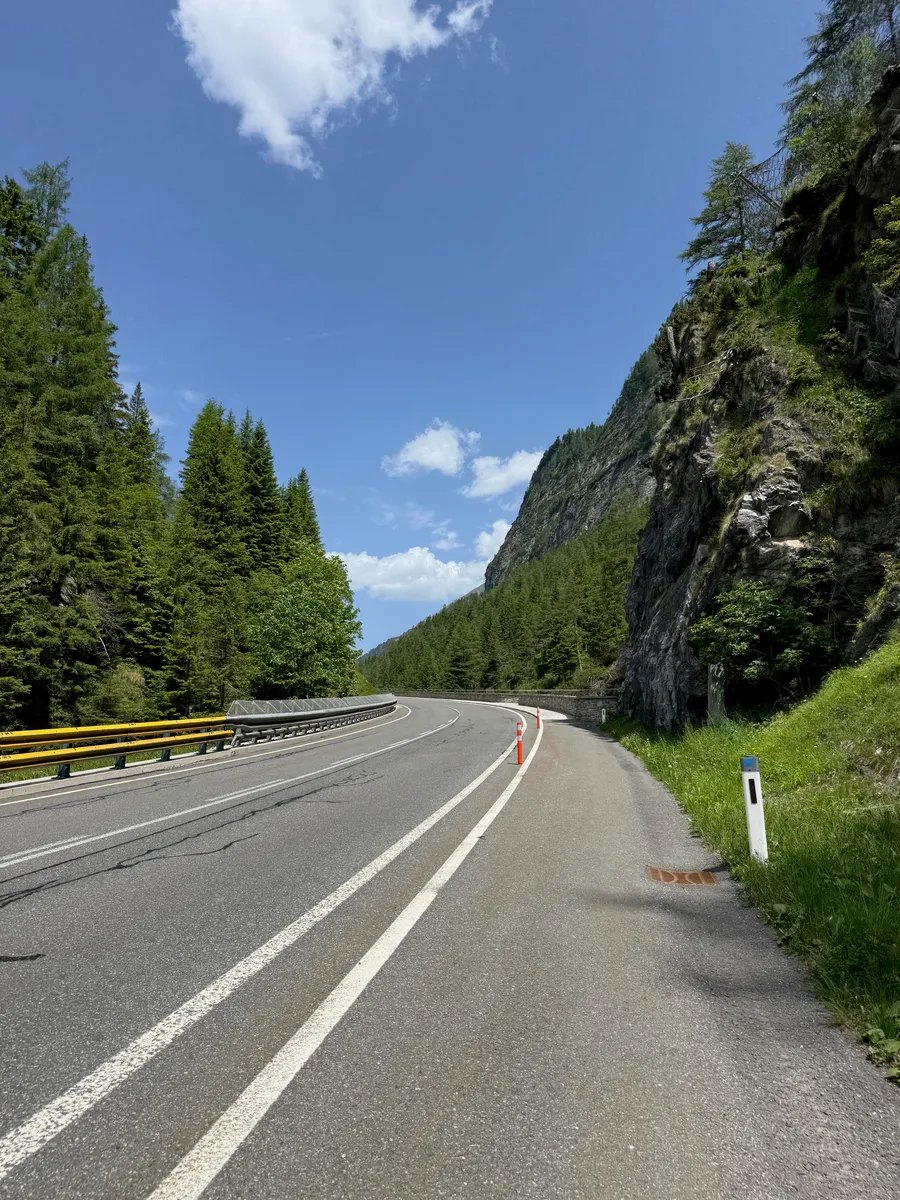
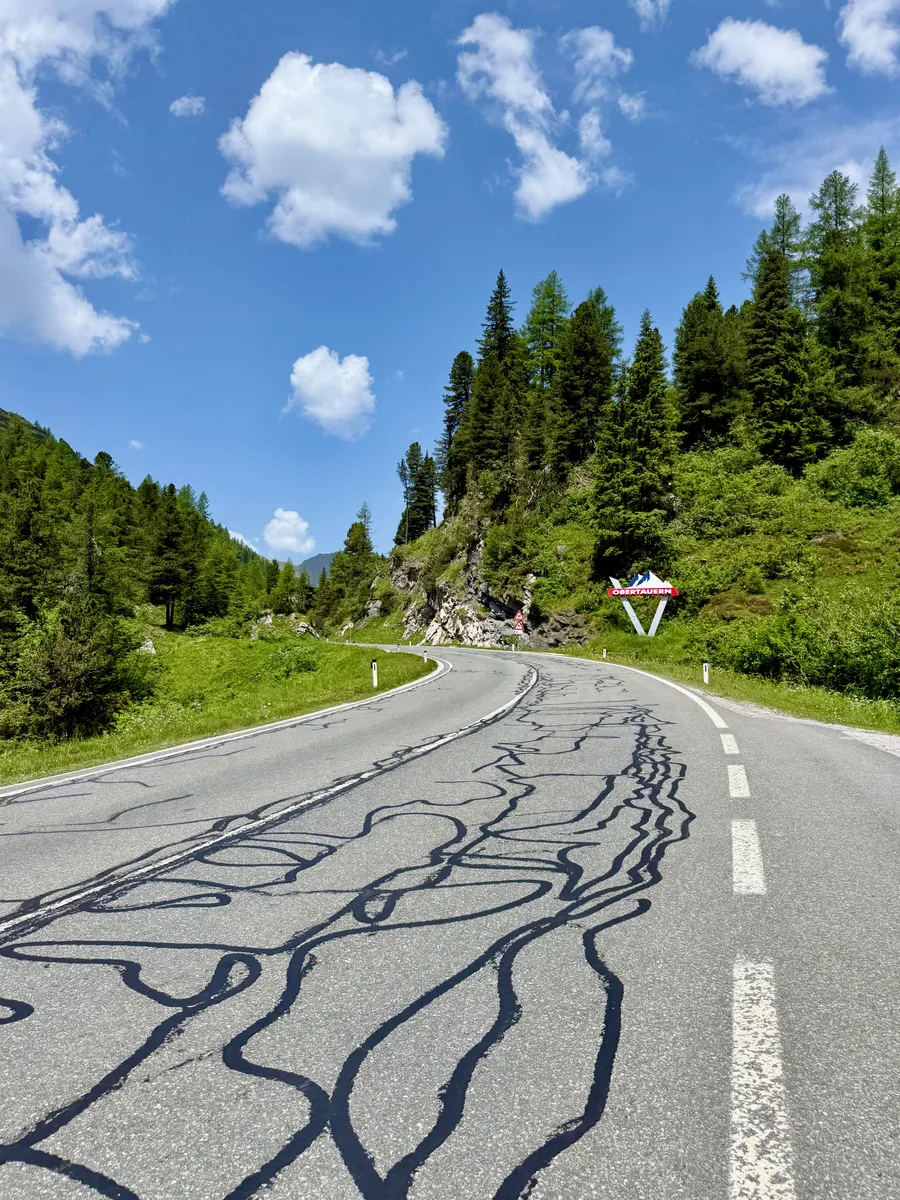
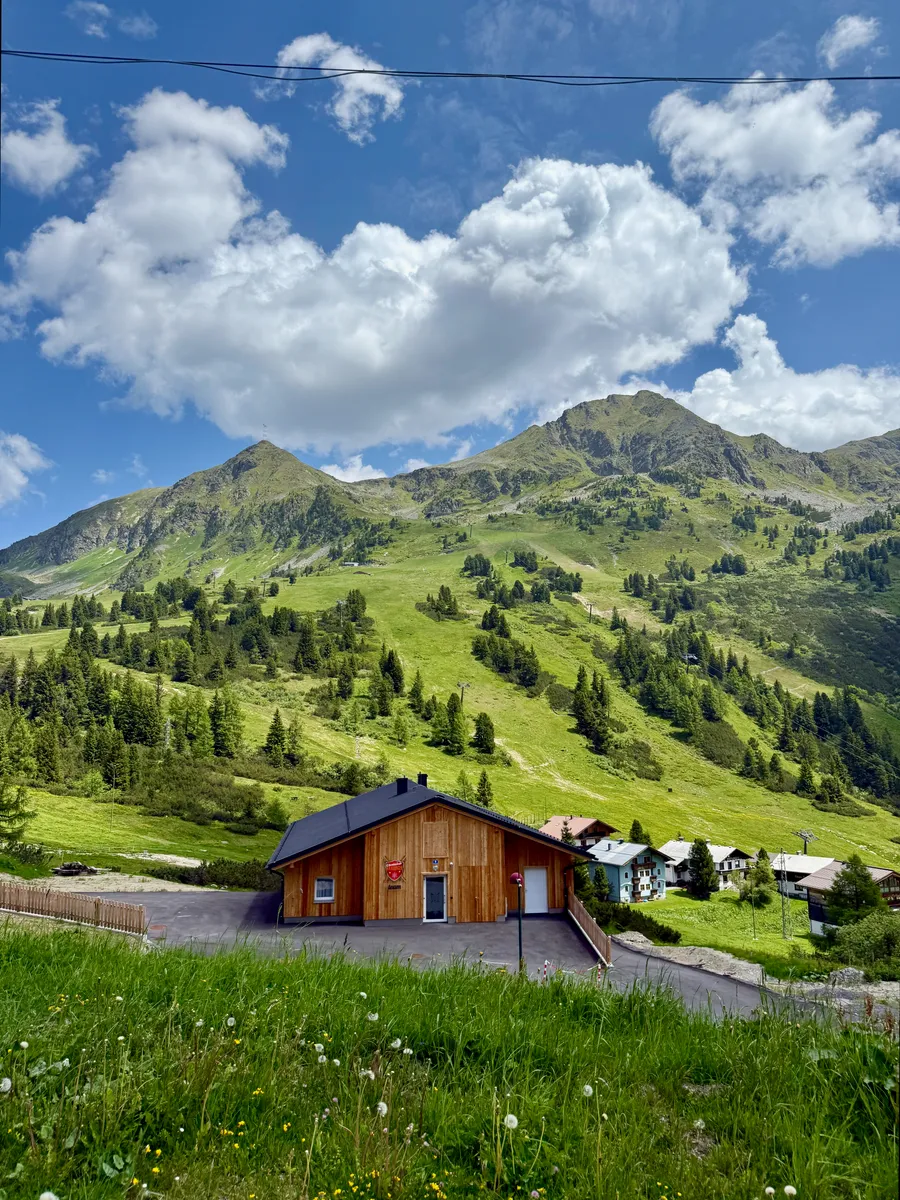
The first half of the pass was forgiving enough that I could make steady progress despite my empty legs. Sunday traffic was light, and the road wound gently among pastures and villages with the Niedere Tauern peaks distant ahead. Eventually the slope stiffened, and the open landscape drew in the heat of the afternoon sun. I loosened my jersey and kept spinning.
Tauernpass could not match the wild magnificence of the Sölkpass I had originally planned to ride, but it still had its charm. The road threaded through fields, short tunnels, a rocky gorge, and even an avalanche gallery that carries traffic safely in winter. The gradient never bit too hard, and I climbed without suffering too much, savoring the variety of the terrain.
After a brief pause in Obertauern for photos, I tipped into another descent. This one was fast, twitchy, and exhilarating. The wide road and sweeping bends encouraged speed, while the mountain views flanking me made it impossible not to smile. For a moment, fatigue fell away, replaced by pure, joyous flight.
When the road tilts down, it’s always game on. If the tarmac is smooth, wide, and built for speed, you can let yourself go without diving into danger. The descent begins with a long, sweeping bend. You feather the brakes, controlling the rush, then spot the apex. You go full throttle now - committing, you release the brakes and sprint. The bike slingshots out of the curve. You tuck, speed surges, and with a rush of adrenaline flooding your body, you dive into the next turn, attacking it with everything you have.
I rolled into Radstadt station far earlier than expected, at just 1:30 p.m. Clear skies above. A quick glance at the forecast showed storms had been pushed back by three hours. That meant I had time. Enough a buffer to risk riding the last stretch to Irdning, even if I had to crawl. Worst case, I could always hop on a train further down the valley.
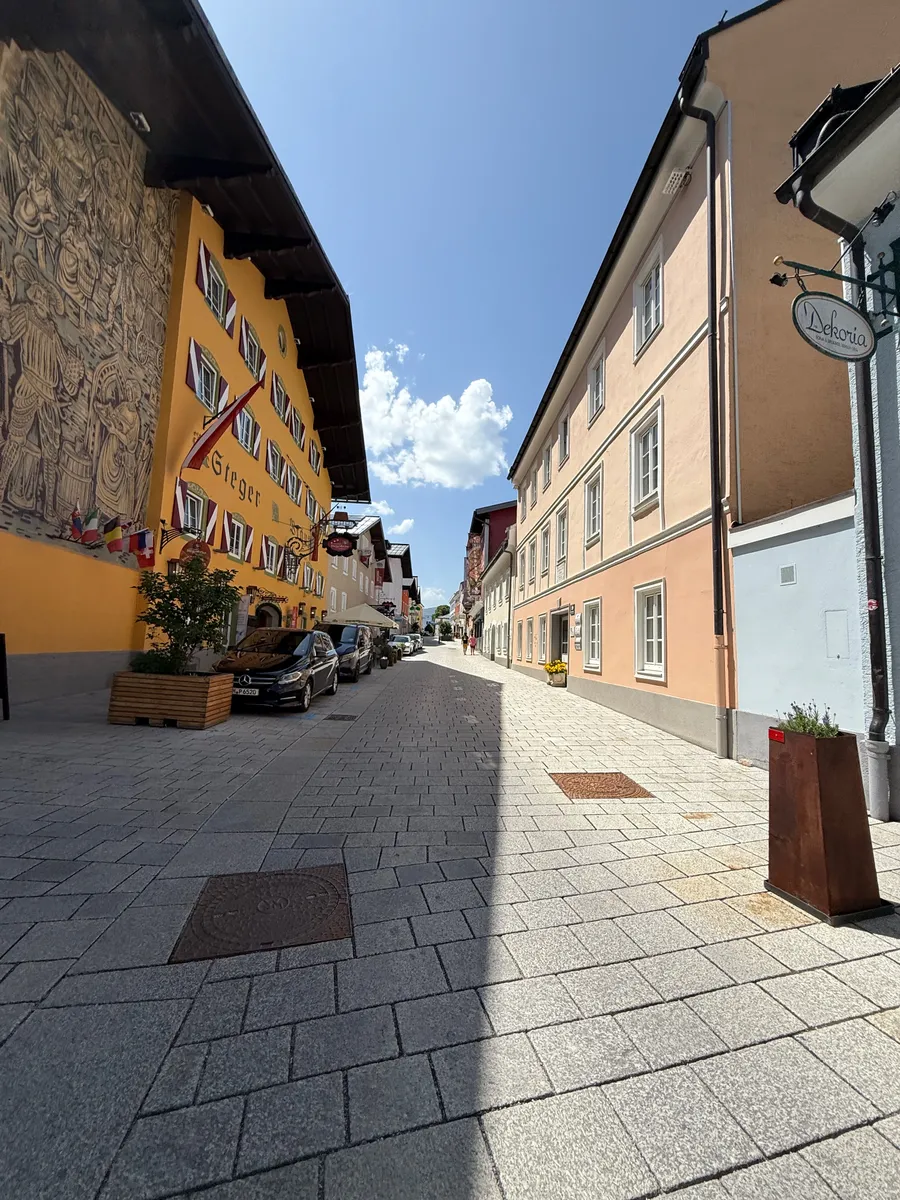
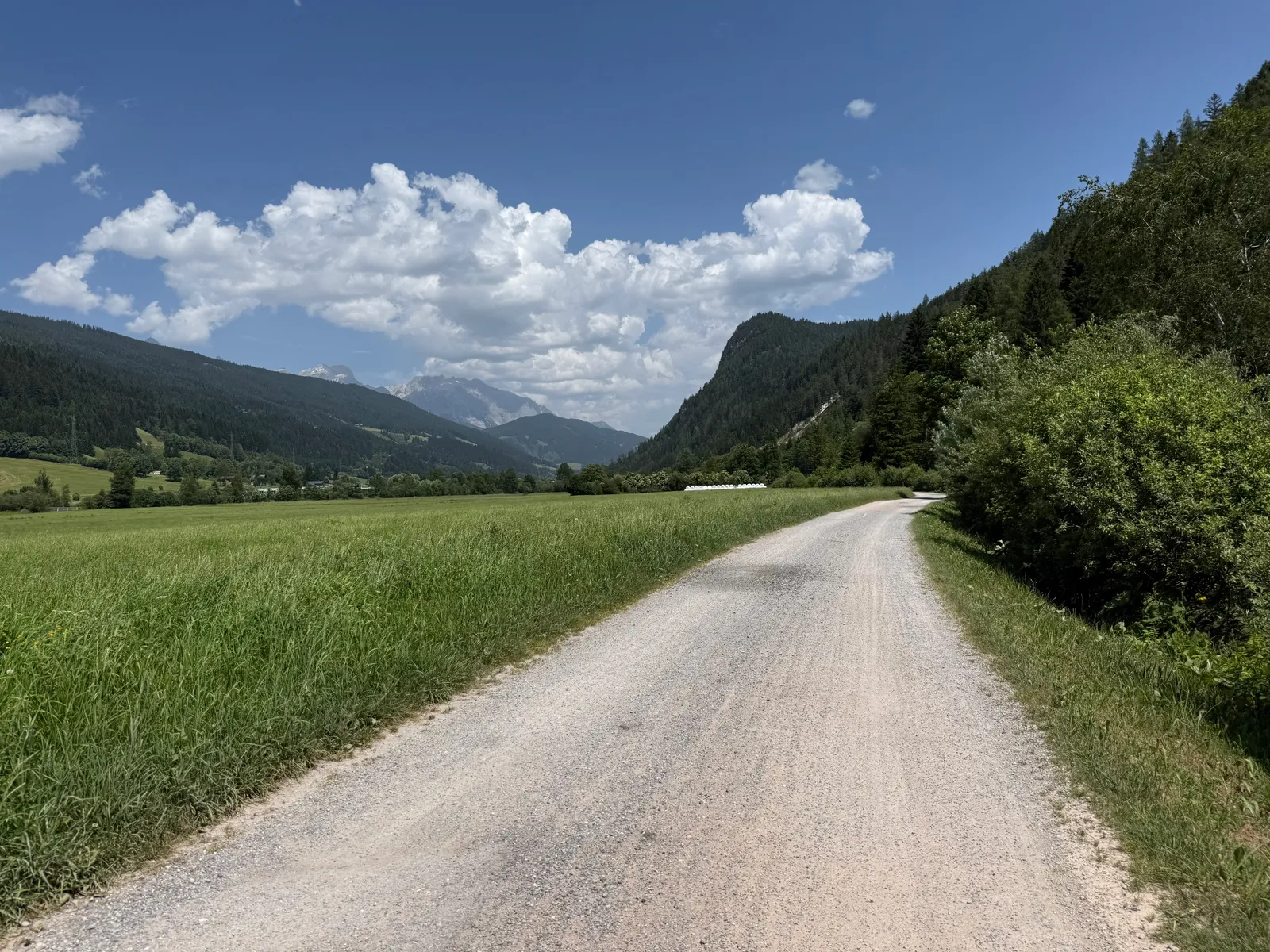
I headed into the town center for coffee. Espresso, coke, and ice cream — my unholy trinity of sugar and caffeine that always scandalize any Italian barista. But for me, it was medicine. Within minutes, I felt hunger stir for the first time in 24 hours. My stomach had switched back on.
I clipped in again, and this time I wasn’t just rolling. I was riding. Properly. I’ve chosen to say away from roads as much as possible this time, wanting to delve deep into tranquility of the valley, opting for gravel bike paths. And boy, they were smooth! I could cruise at 30 kph on my skinny 25mm tires. The sun was high. Fifty kilometers to go. The rhythm was back.
The road turned right, over the old, wooden bridge. Having speed and momentum, I attacked it hard, bunny-hopping over the edge, and then leaning deep into the turn on the exit. Rear slid away on the soft, loose gravel, but with a quick flip of my hips I straightened the bike and safely rolled forward.
Them, I felt it. Thump, thump. The rear end went soft. A flat. I pulled over, stripped the wheel, but found no obvious cut. Pinch flat, probably. The tube swap was quick, but now the real test: my brand new mini-compressor. First time using it outside of my living room. I clipped it on, pressed the button, and after a few seconds of loud whirring it stopped. Tire was firm. Just like that — no sweating over a hand pump. I re-mounted the wheel, grinning. Game changer.
The valley led me through Schladming and Oberhaus, gravel blending with tarmac. That’s when I saw it. A single dark cloud. Compact, but heavy. Radar check confirmed: local storm, right in my path. I pushed the pedals harder. Rain hit just as I reached the ramp up to a McDonald’s parking lot. Decision made. Burger stop. Waiting, I devoured the meal, glad I could eat again.
The rest of the day blurred into transit miles. Nothing remarkable, except the nagging thought that kept circling in my head: I don’t really want to ride anymore.
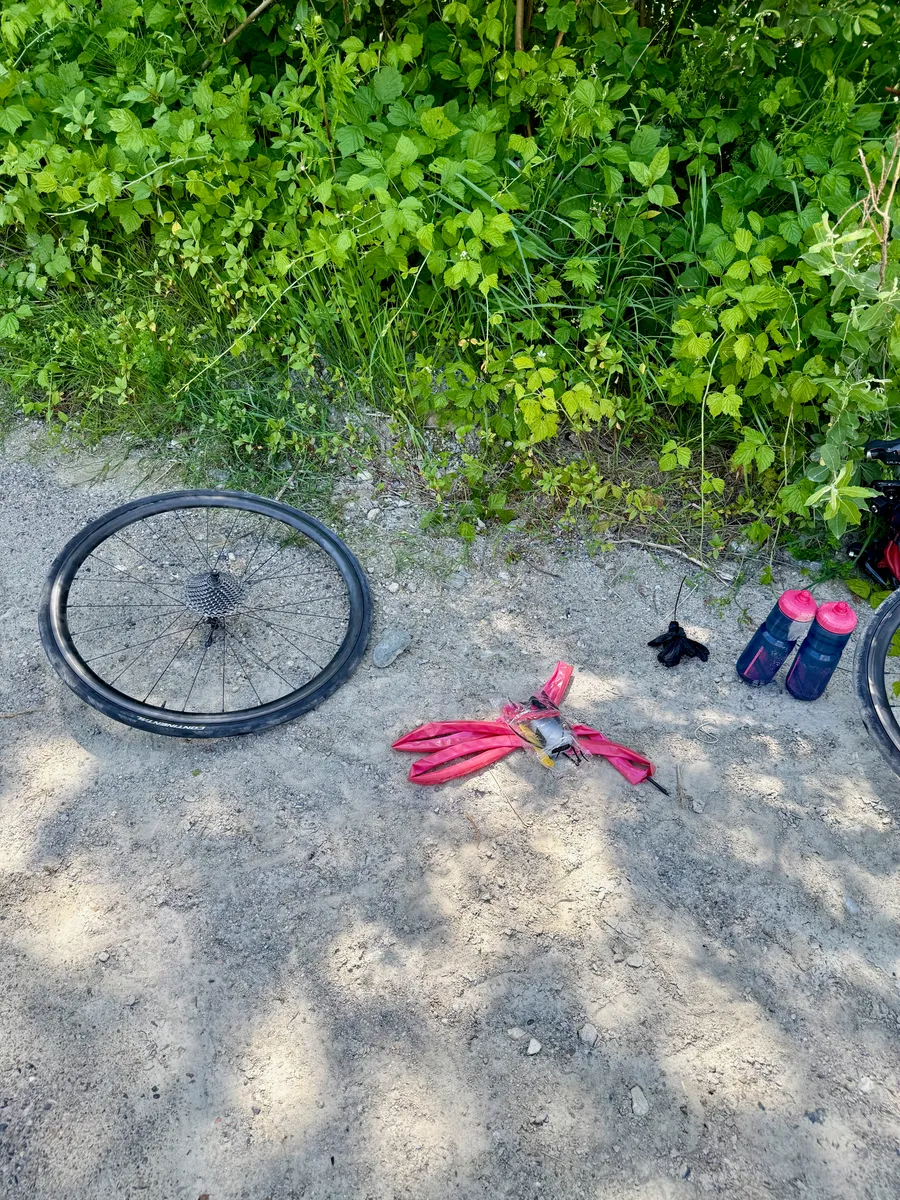
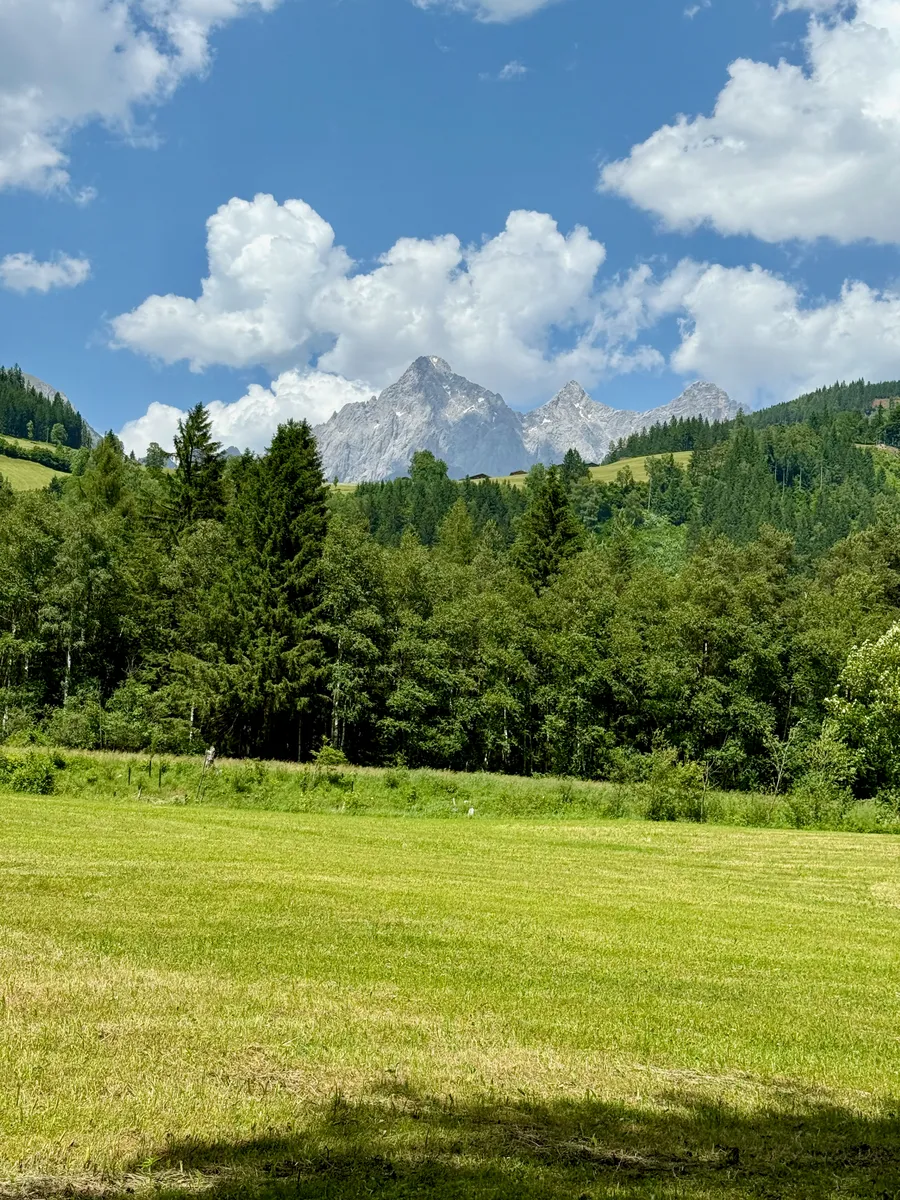
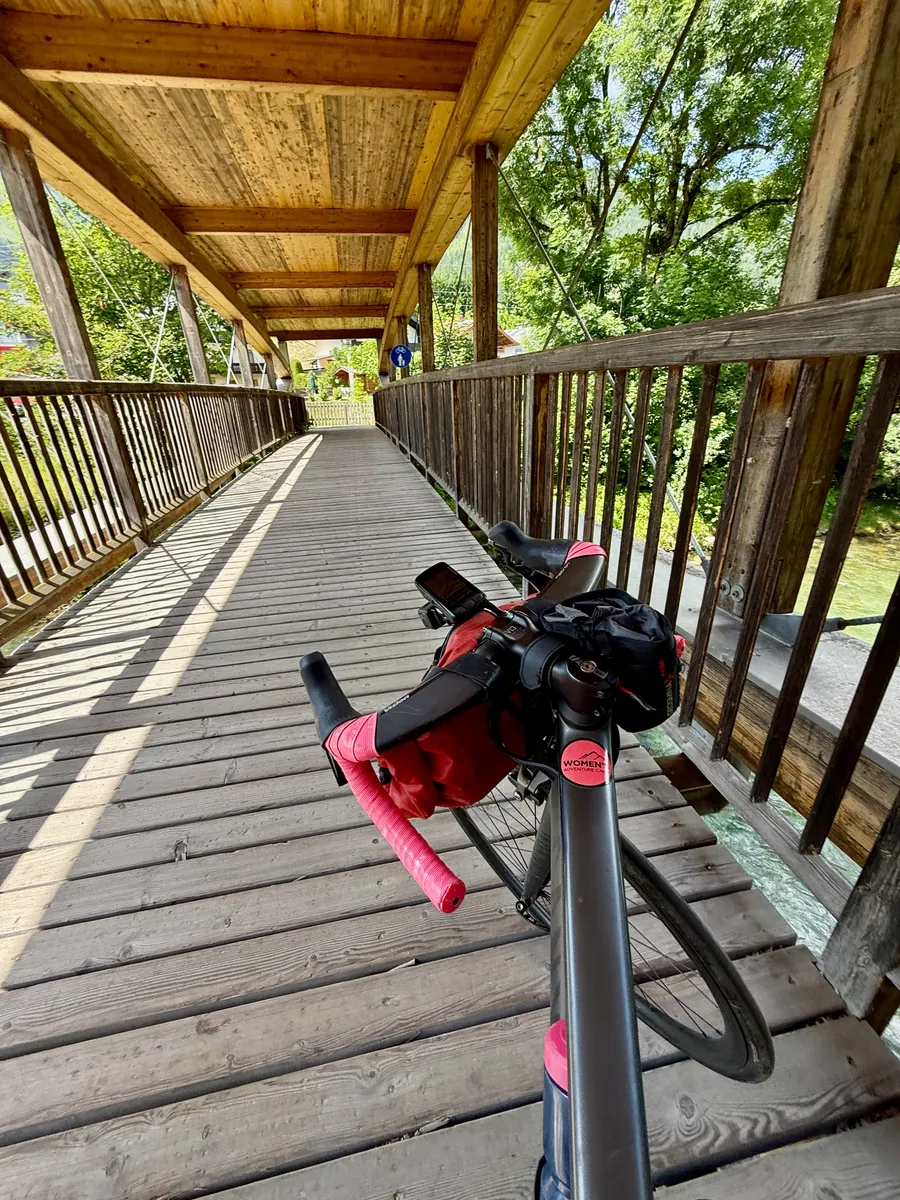
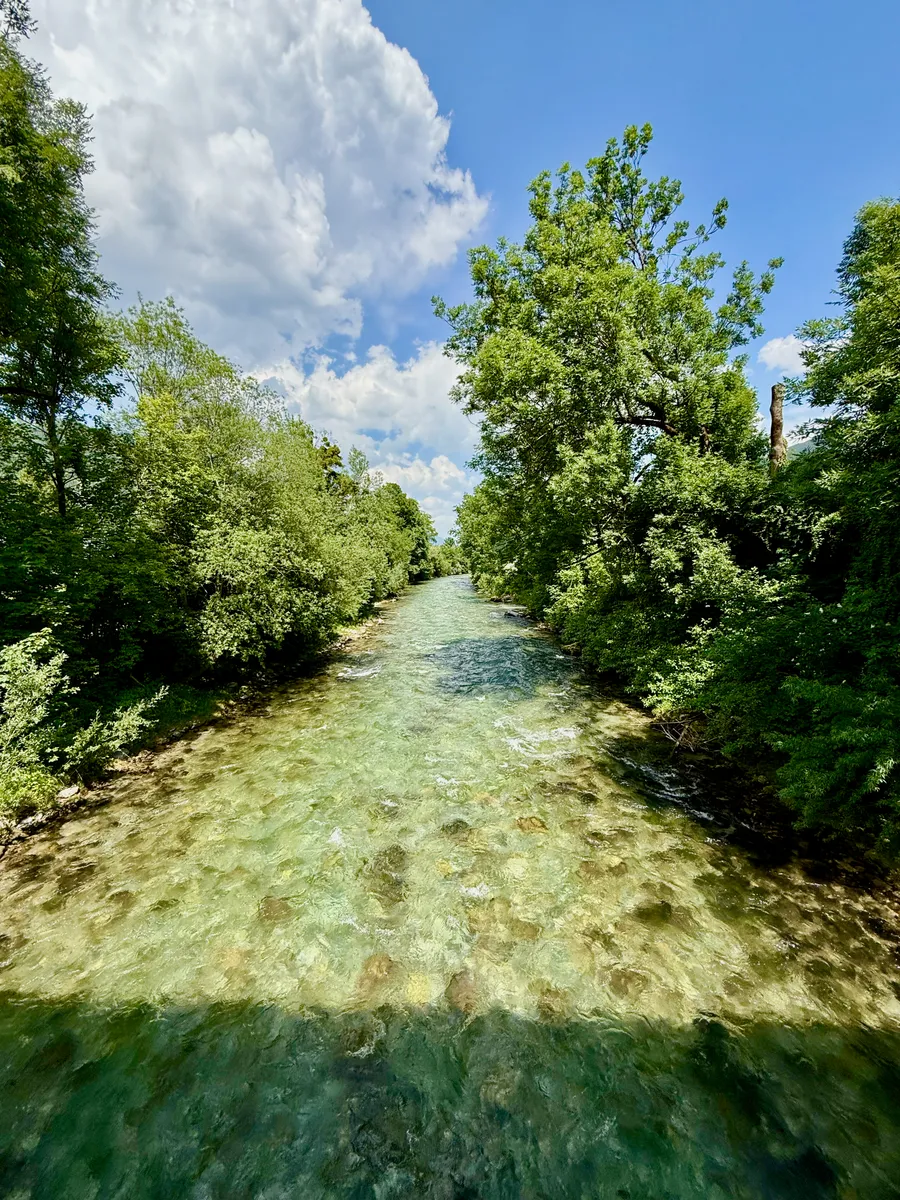
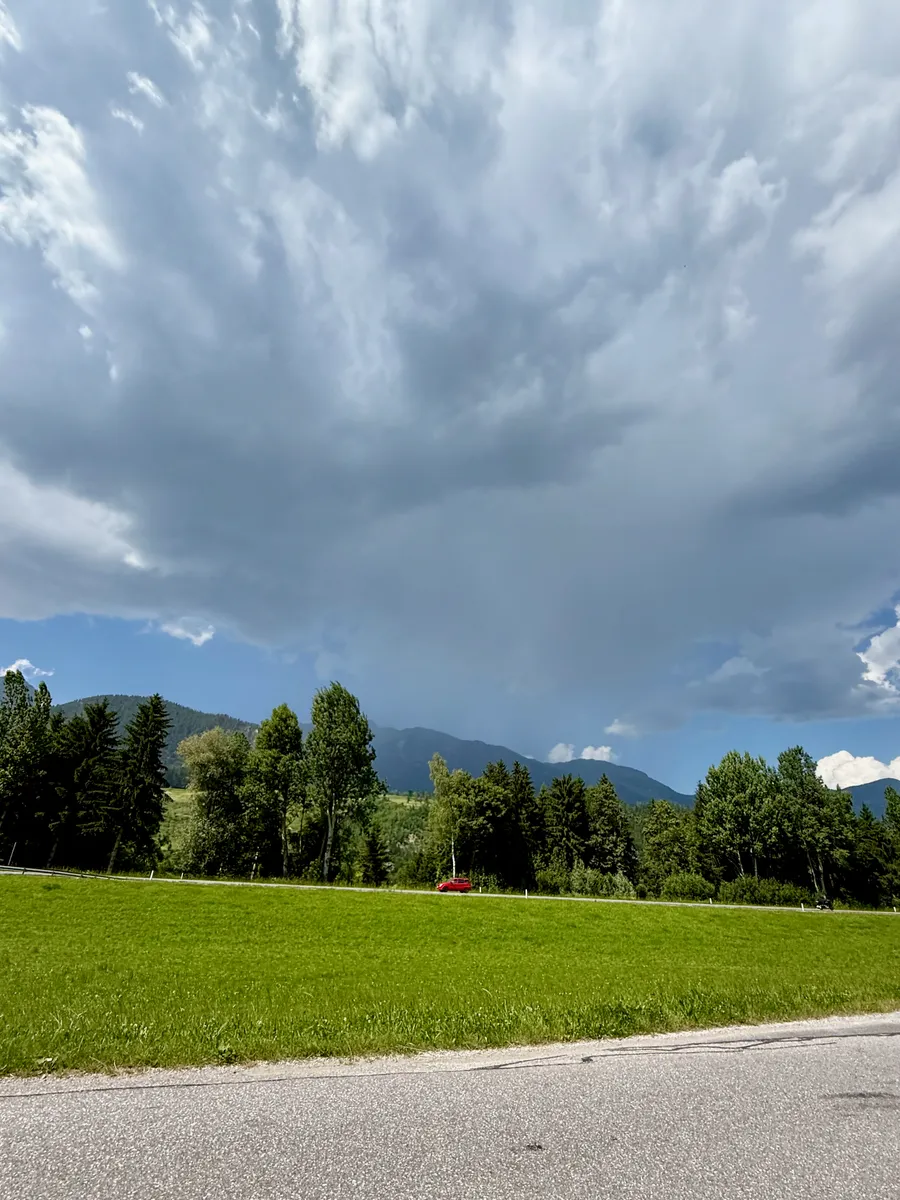
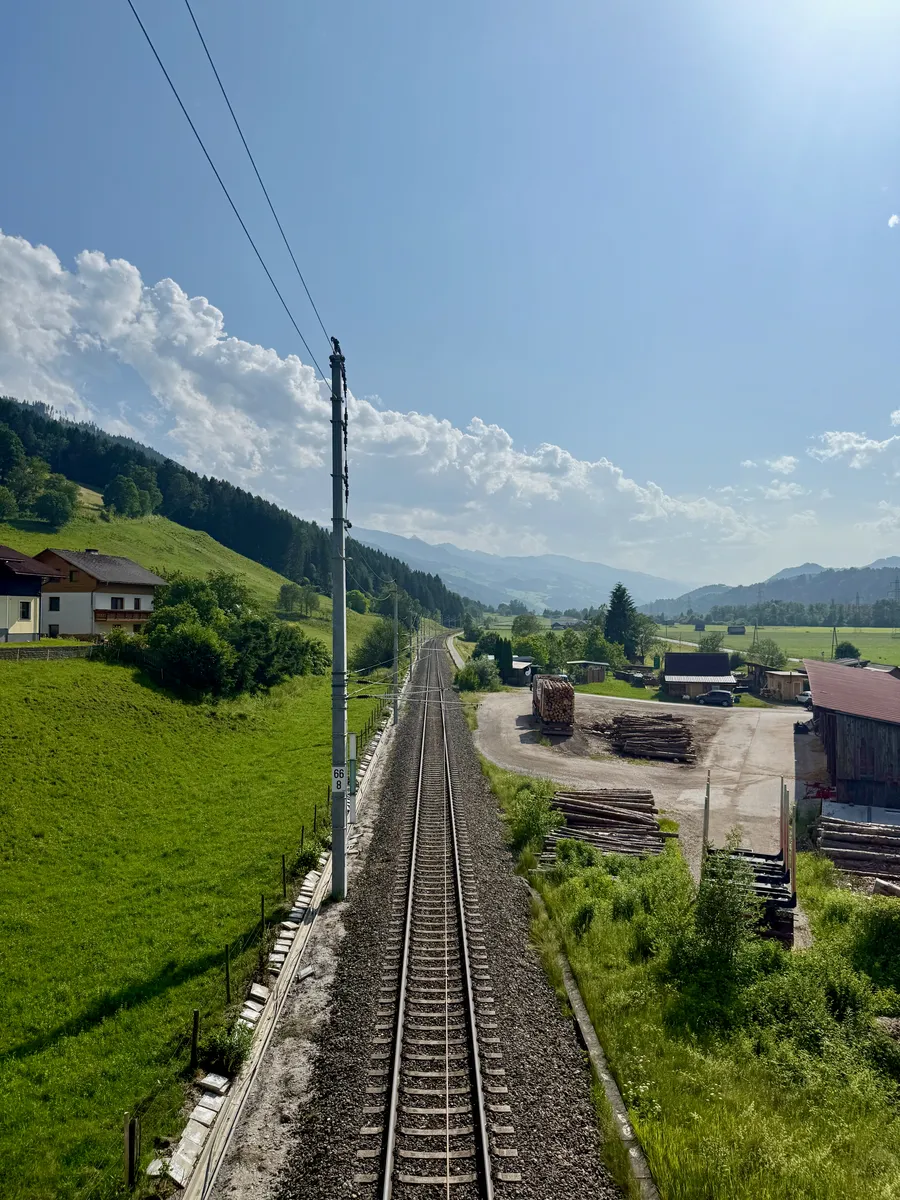
Day 4 - Irdning to Bruck an der Mur
Day five began under an overcast sky, the air sharp and chilly. The original plan was no longer possible, as Vienna was too far for the last day on the bike. Yesterday I’d already cut down to a short recovery spin, just enough to shuffle between two bookings and keep the legs awake. Today would be my finale. I discovered that from Bruck an der Mur trains ran frequently to the capital, so I redrew my route: one last big day through the Gesäuse valley. One hundred fifty kilometers, twenty-two hundred meters of climbing. Challenging, but not punishing. A fitting curtain call.
Breakfast at the BnB was perfect. I packed, clipped in, and rolled quietly towards Oppenberg. The road was narrow, lined with pastures. The climb was gentle, my legs felt fresh, and my mood was buoyant. I greeted farmers setting out to work, mooed back at the cows, and grinned at the silence between passing cars.
The ascent passed almost without notice. A short, almost forgettable descent, then another mellow rise brought me to the Kaiserau pass: a broad field framed by the Gesäuse peaks on the Admont side, and with a small lake resting like a mirror in the hollow. I stopped, breathed, and let the landscape settle into me.
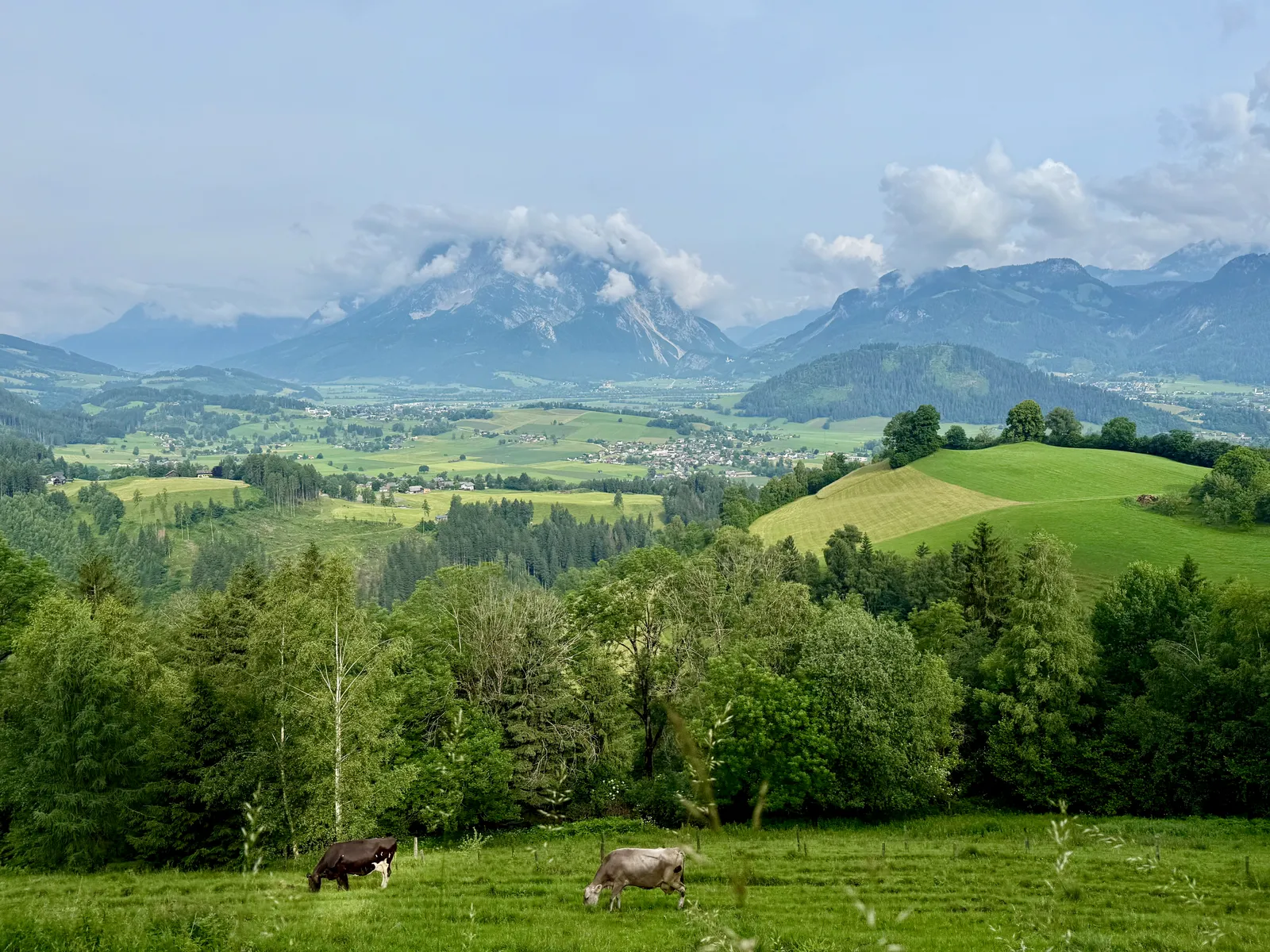
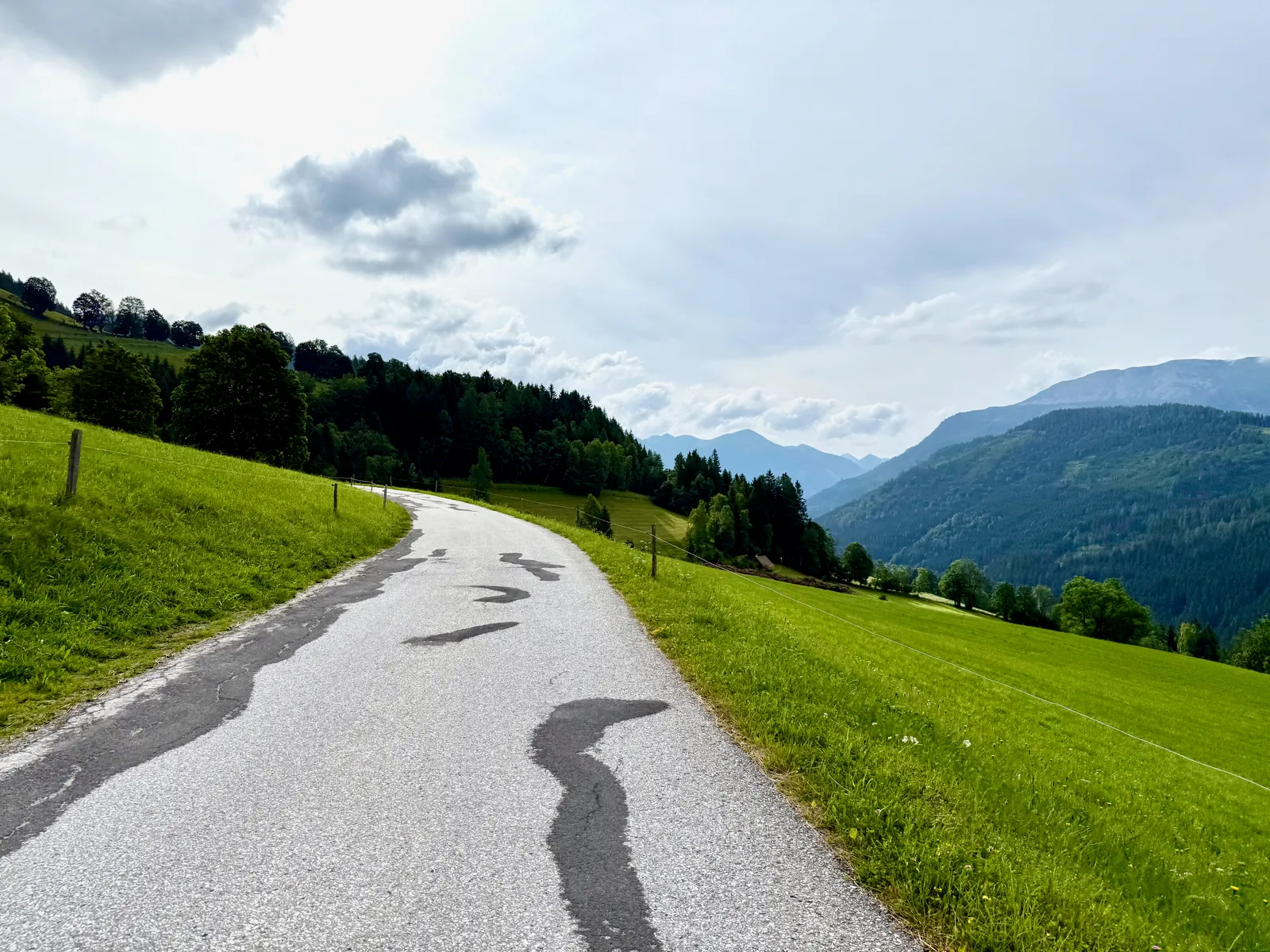
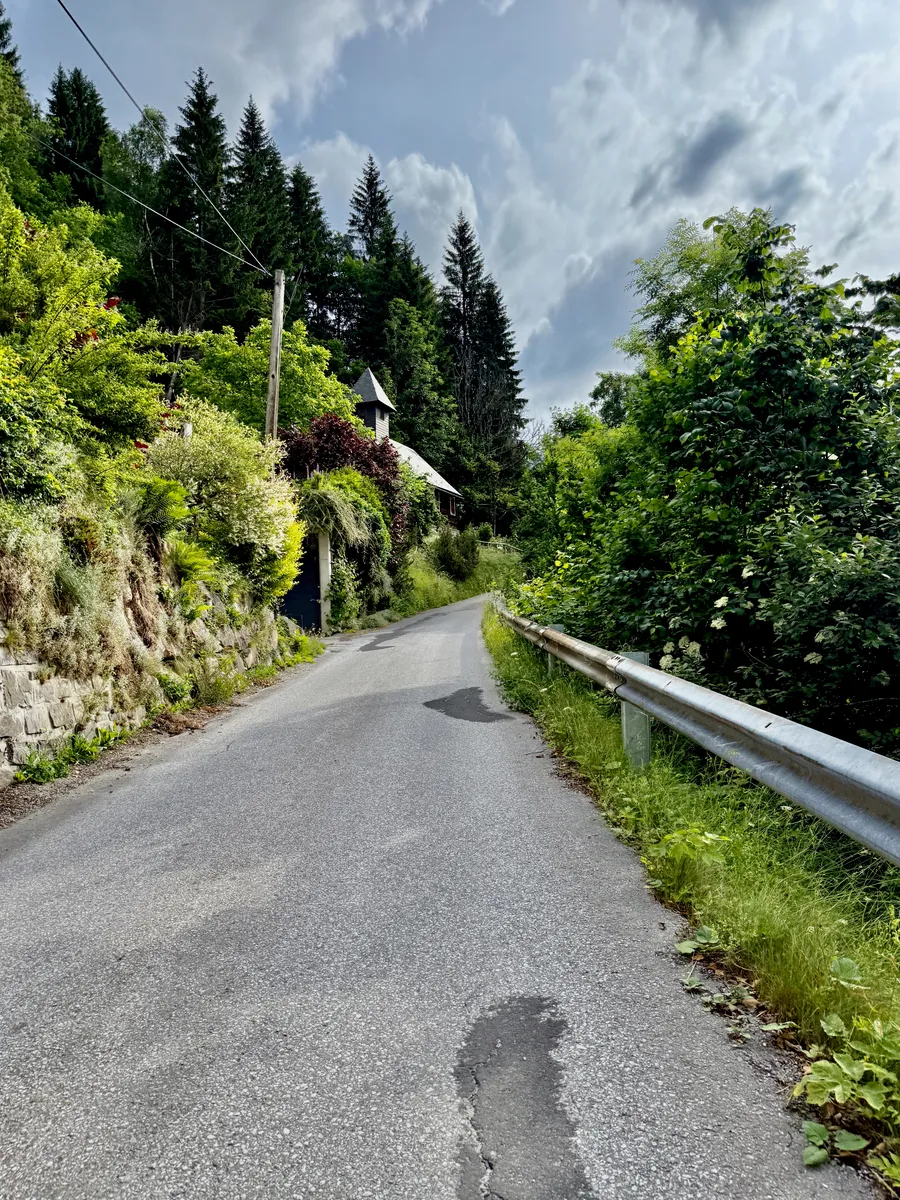
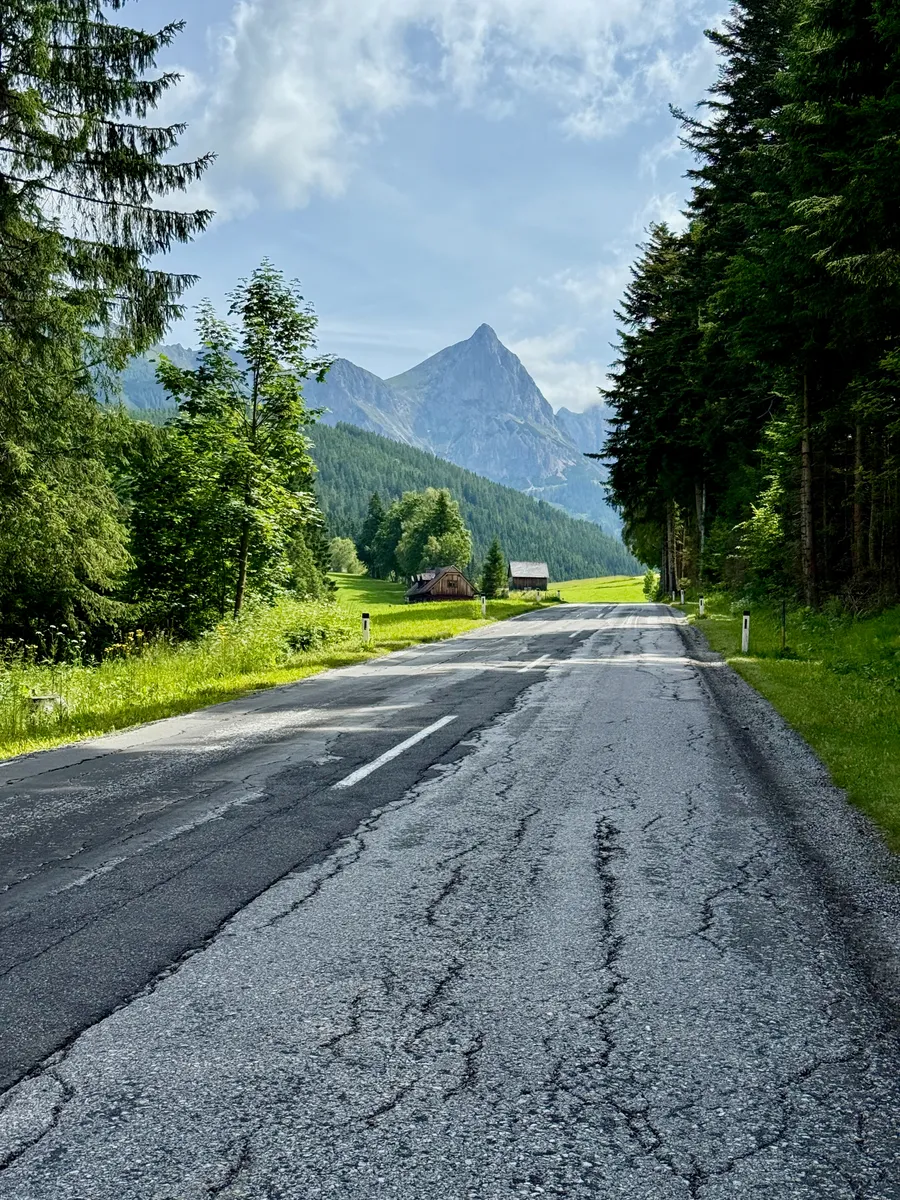
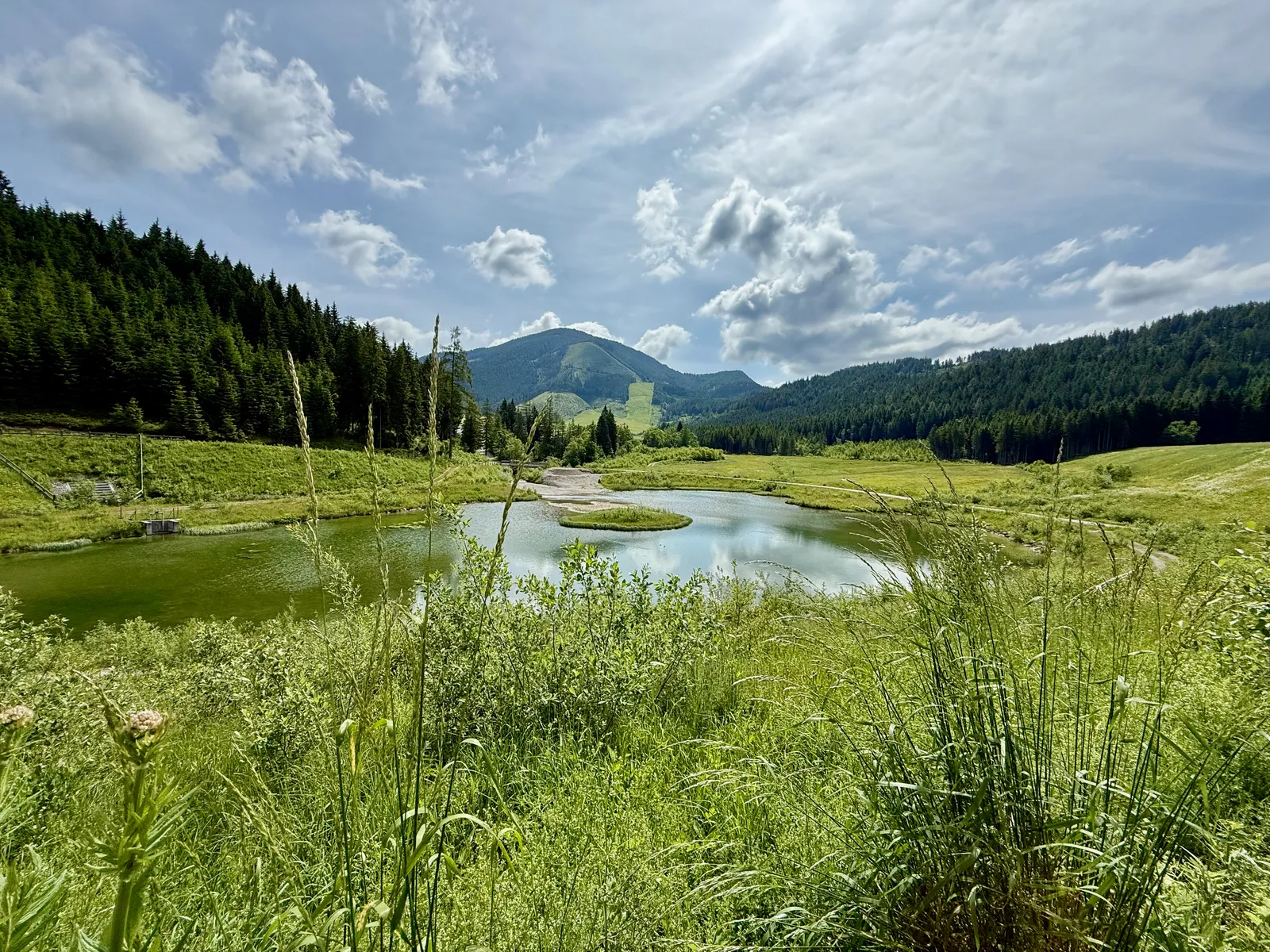
From there came another descent. Smooth, flowing, it dropped me into Admont. And there, rising suddenly at the valley’s mouth, stood the Gesäuse mountains. Great walls of rock, closing like a gate, drawing me in.
I followed the bike path, half-riding, half-staring, my head constantly turning. This wasn’t a road to rush. I stopped often, more than ever, to take photos, to stand still, to let the enormity of the gorge sink in. Usually I ride for speed, but here I was content to dawdle. To be present. The Gesäuse demanded reverence, and I gladly obeyed.
When you find yourself in a place that moves your soul, your usual patterns, those restless searches for sensory input, the need to keep the world rushing past, simply fall away. Suddenly, speed doesn’t matter. Motion doesn’t matter. What matters is stopping. Breathing. Being. You don’t just want to slow down, you need to.
The back of your mind still whispers about timetables and trains, but that voice feels distant, irrelevant. Here, in this moment, nothing pulls you forward and nothing holds you back. There is only presence: you, and the surrounding nature, intertwined. Pure, unburdened bliss.
These frequent pauses, of course, served another purpose: rest. My body was already carrying the fatigue of the previous days. I knew I could reach the main railway line, but with each passing mile the act of pedaling grew increasingly mundane, even against the backdrop of spectacular scenery.
The road unfolded in a varied rhythm — part shared with traffic, part along a separated bike lane. I rode through tunnels and galleries, along barriered cliffs where the valley opened wide beneath me. At one point, the path turned into a sequence of long wooden bridges. The majestic towers above watched silently as the boards drummed a hollow rhythm under my wheels.
But soon I had to leave the canyon behind. I reached Heiflau, where the valley split in two. To the left stretched my original route — through Wildalpen in the Ybbstal Alps, on to Mariazell, Höllental, and finally Vienna. To the right lay my new “escape” route, threading through Eisenerz and Prabichl toward the grand valley of the Mur. I stopped briefly at a small market to refill my bottles and replenish my fuel with gummy bears. A few cyclists lingered nearby, but conversation didn’t bloom, as they didn't know any English, and my German doesn't stretch far beyond "Guten Tag" and "Auf Wiedersehen". A familiar pattern on my solo journeys: no new friends this trip.
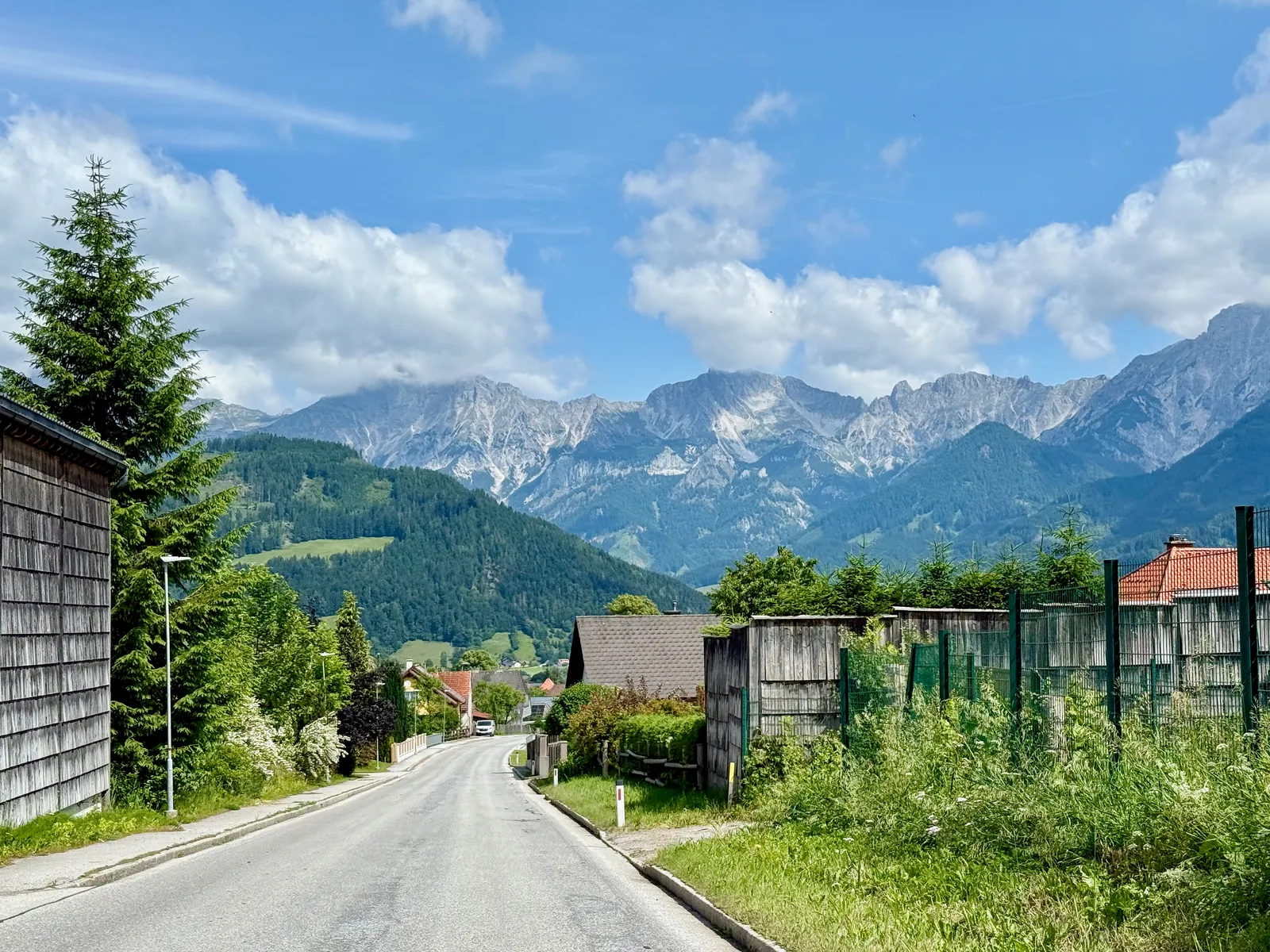
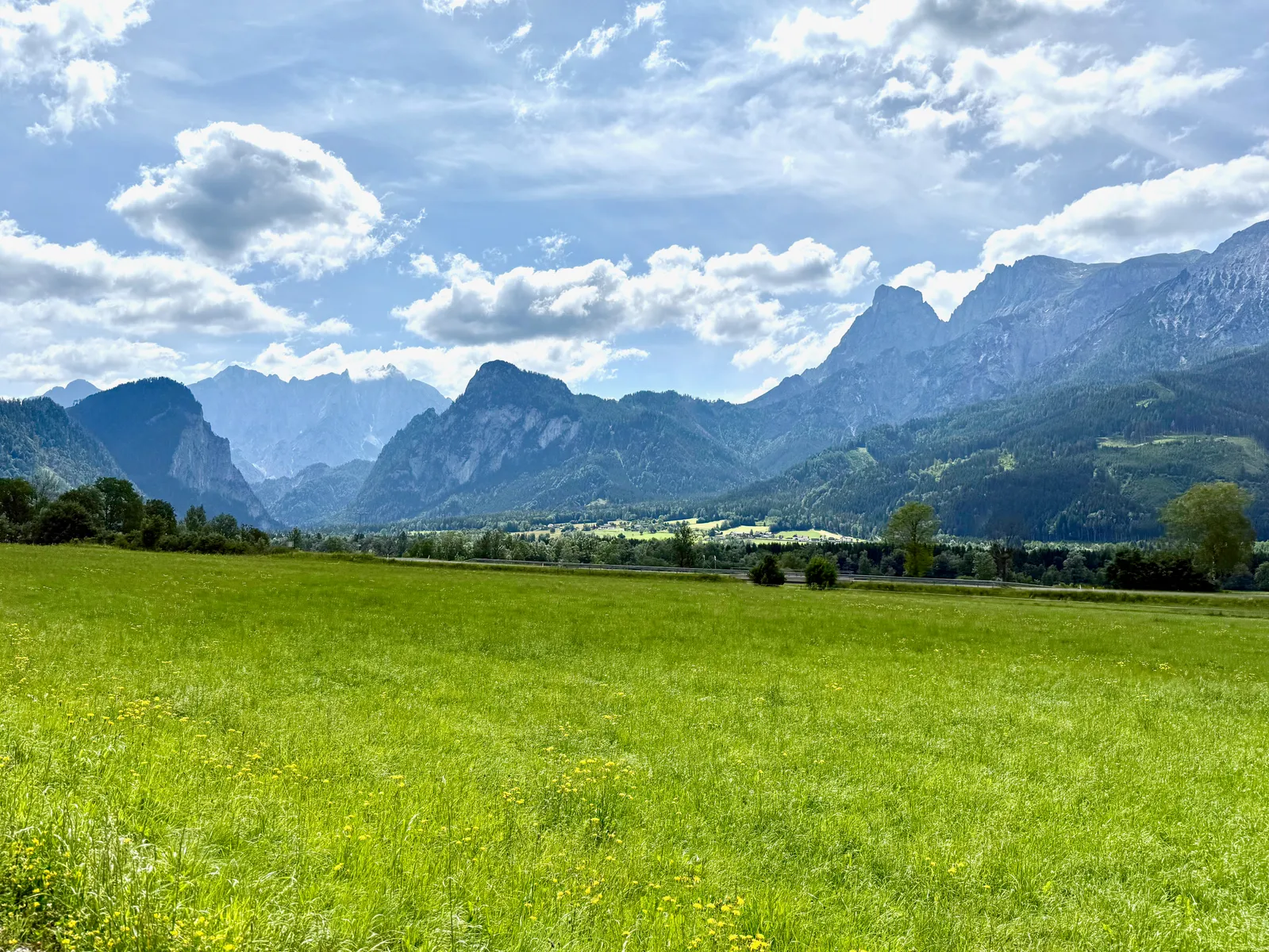
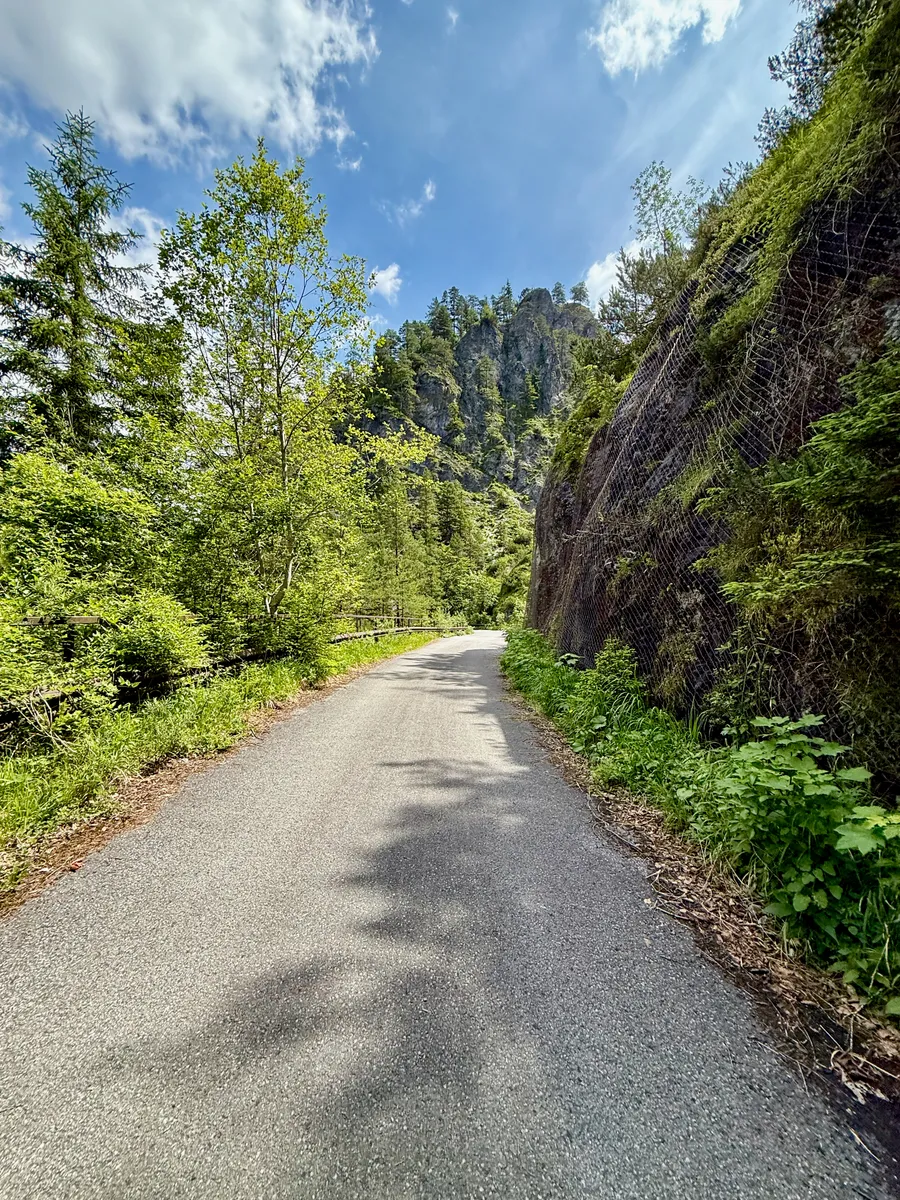
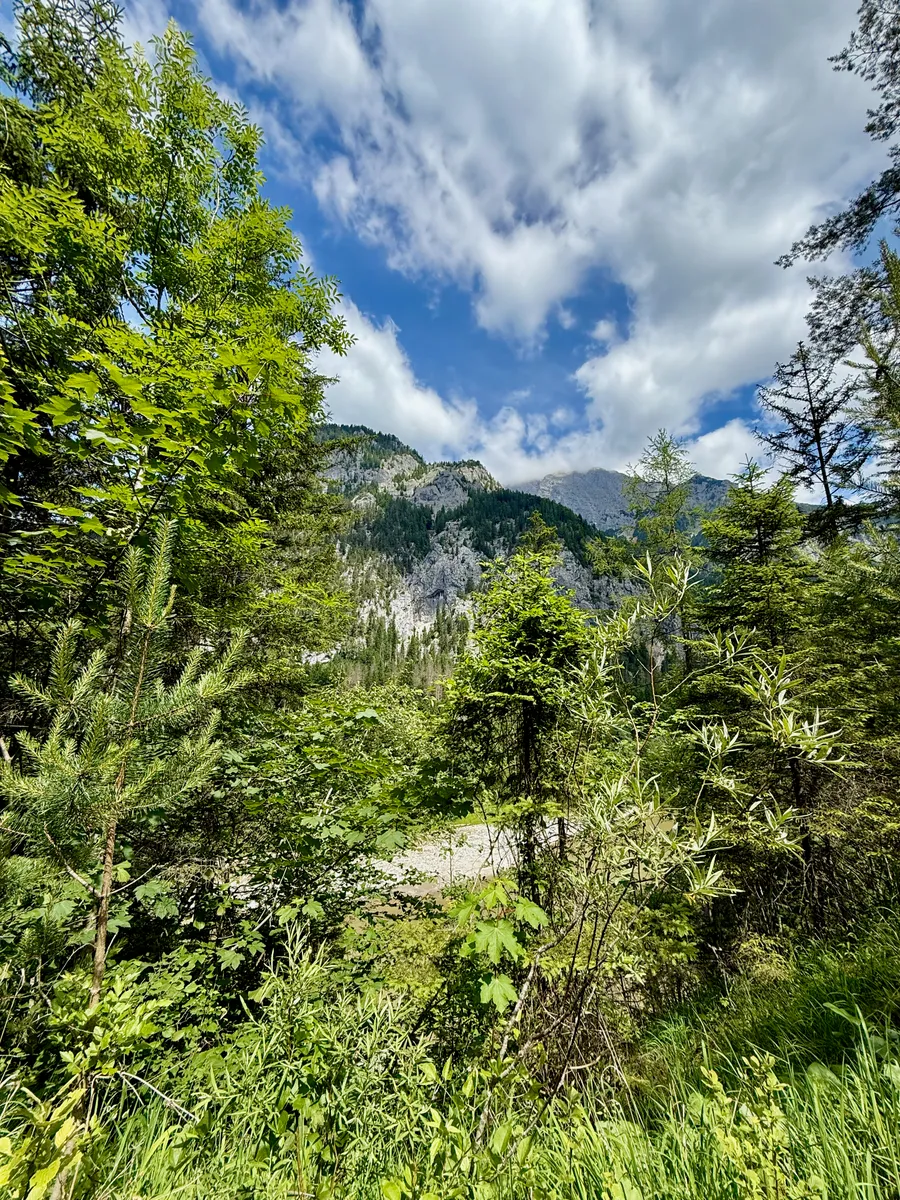
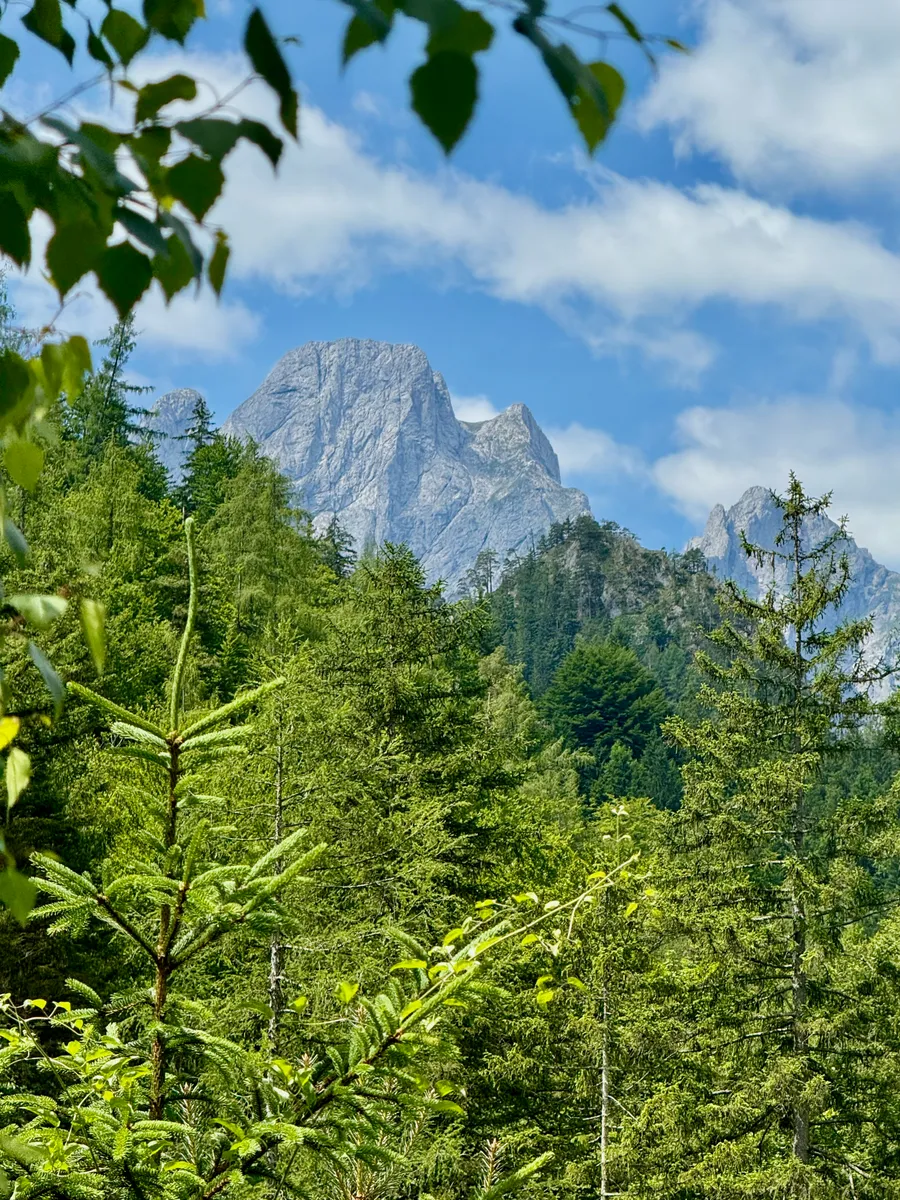
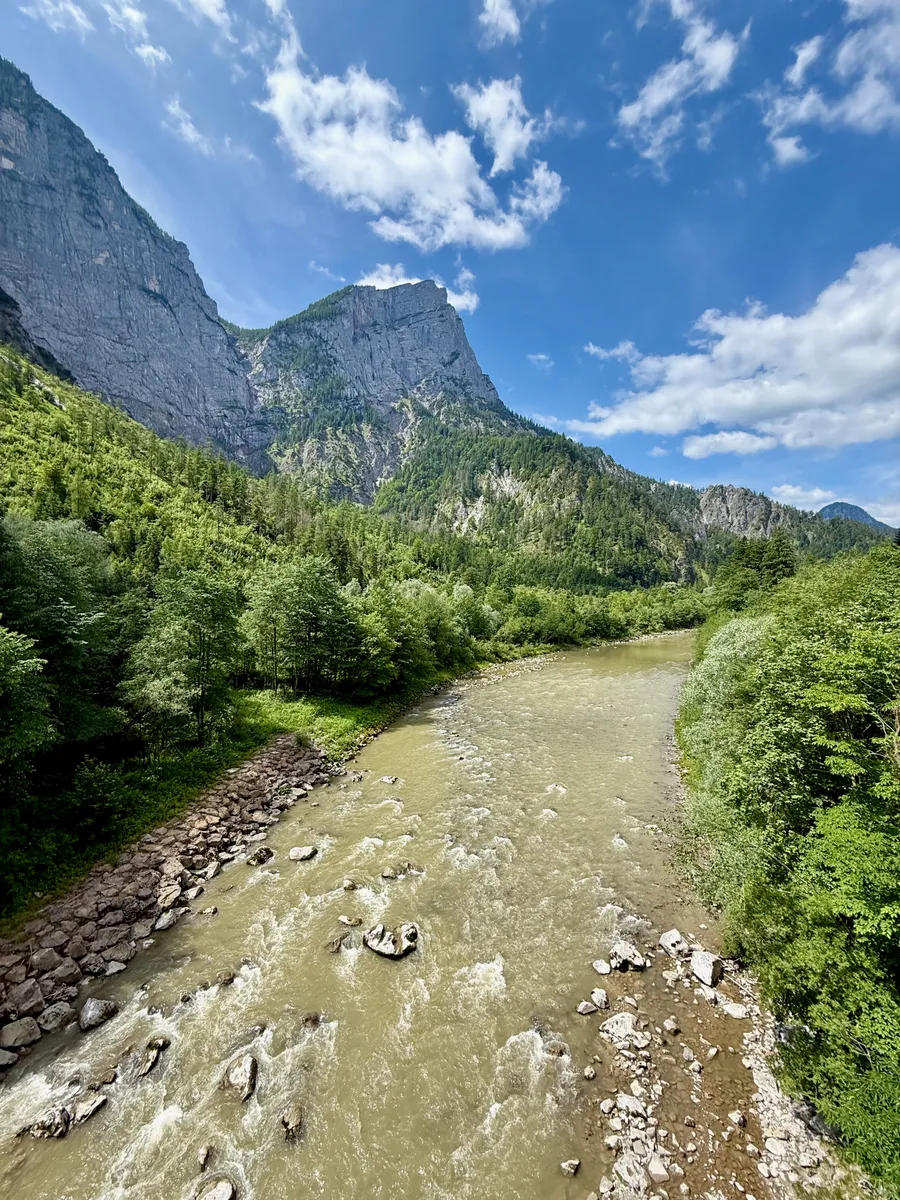
The next stretch of road offered little at first. Then, almost without warning, the bike lane veered sharply away from the main carriageway, climbing steeply toward a clearing that opened like a secret. Below me shimmered the Leopoldsteiner See, framed by mountains and dense forest. I stopped for a moment — a few photos, a few breaths — before plunging back down toward the road and into Eisenerz.
What awaited me there was otherworldly. The enormous quarry loomed over the town like an ancient pyramid — colossal, consuming, almost mythic in its scale. Erzberg. Rich in iron, once mined underground, now torn open into monumental terraces, the mountain itself becoming an artifact of industry. It felt like stepping into a scene from a cyberpunk dystopia — the Earth reshaped by ambition and greed.
I rolled through the town still in awe when my eyes caught something far ahead: a bridge suspended high above the valley. My first thought was that it must be a railway, but the trains here curve west, looping around the mine. This was east — the way I was meant to go. A glance at the GPS confirmed my suspicion, and a flicker of dread mixed with fascination: that impossibly high bridge was my road.
Slowly, deliberately, I began the ascent. Despite being a main interstate artery, the traffic was considerate — trucks and buses giving me ample space, something almost unthinkable back home in Poland. The climb wasn’t as punishing as it had appeared from below. A steady 7%, smooth tarmac, two generous lanes. The view widened with every meter gained, until only a thin railing separated me from the vast, silent landscape.
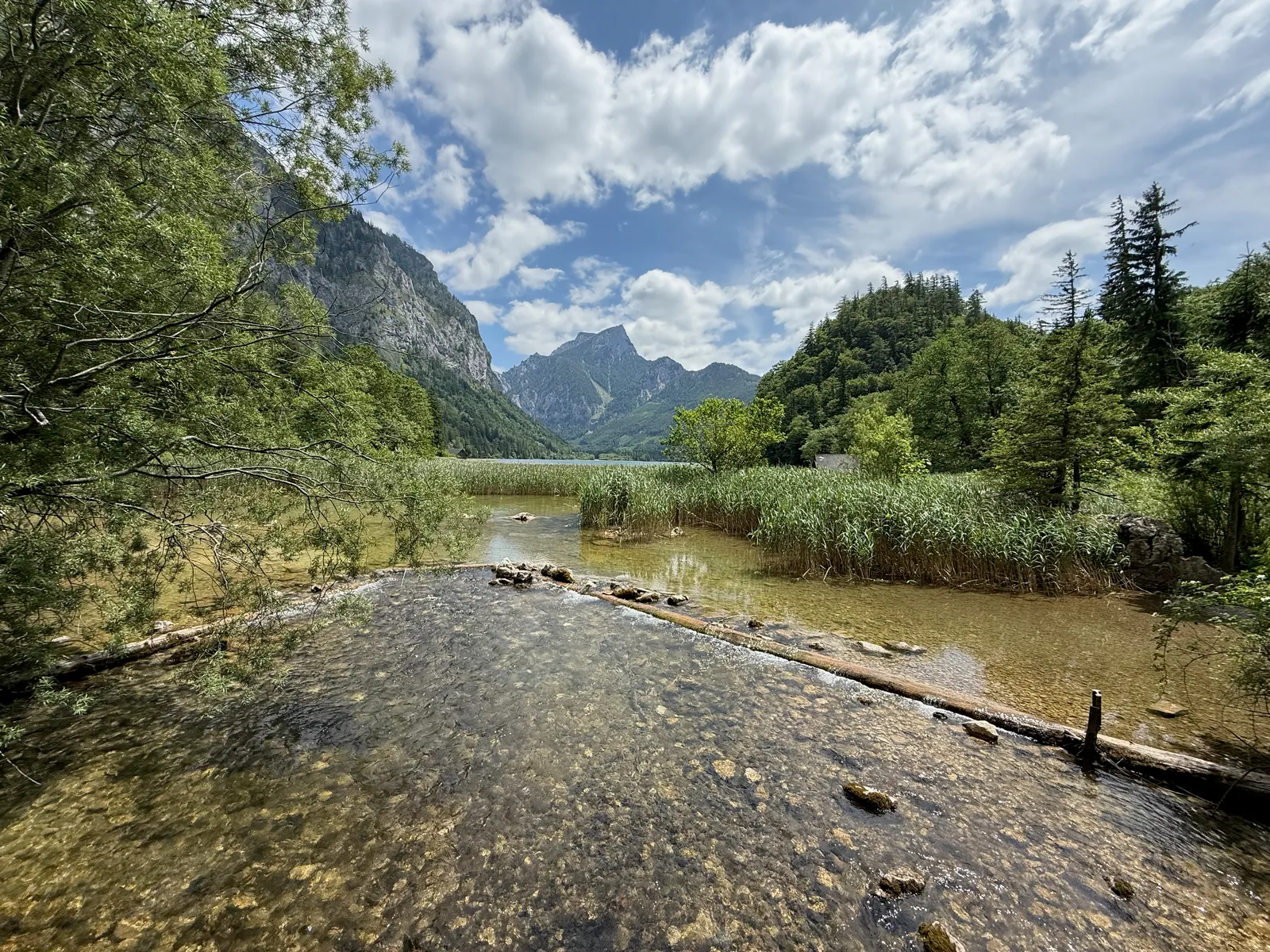
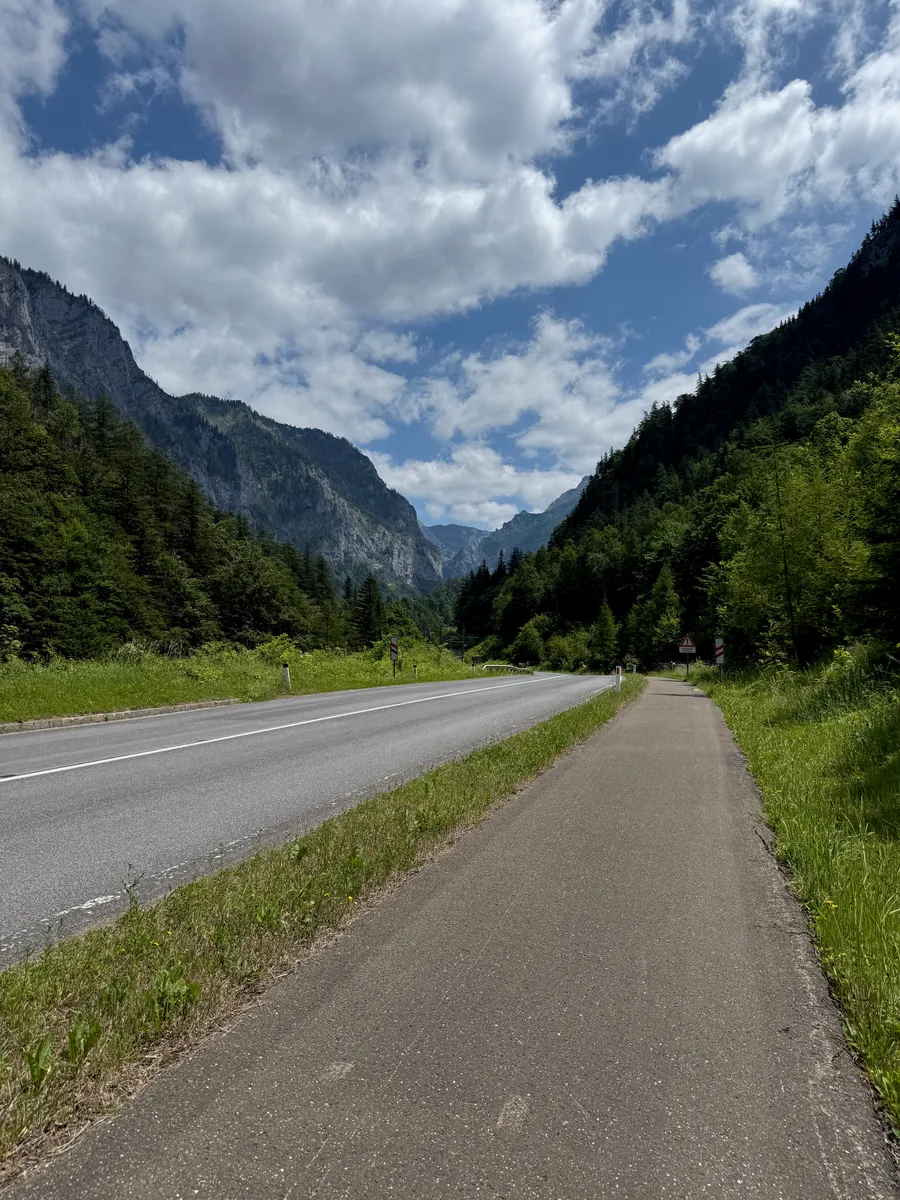
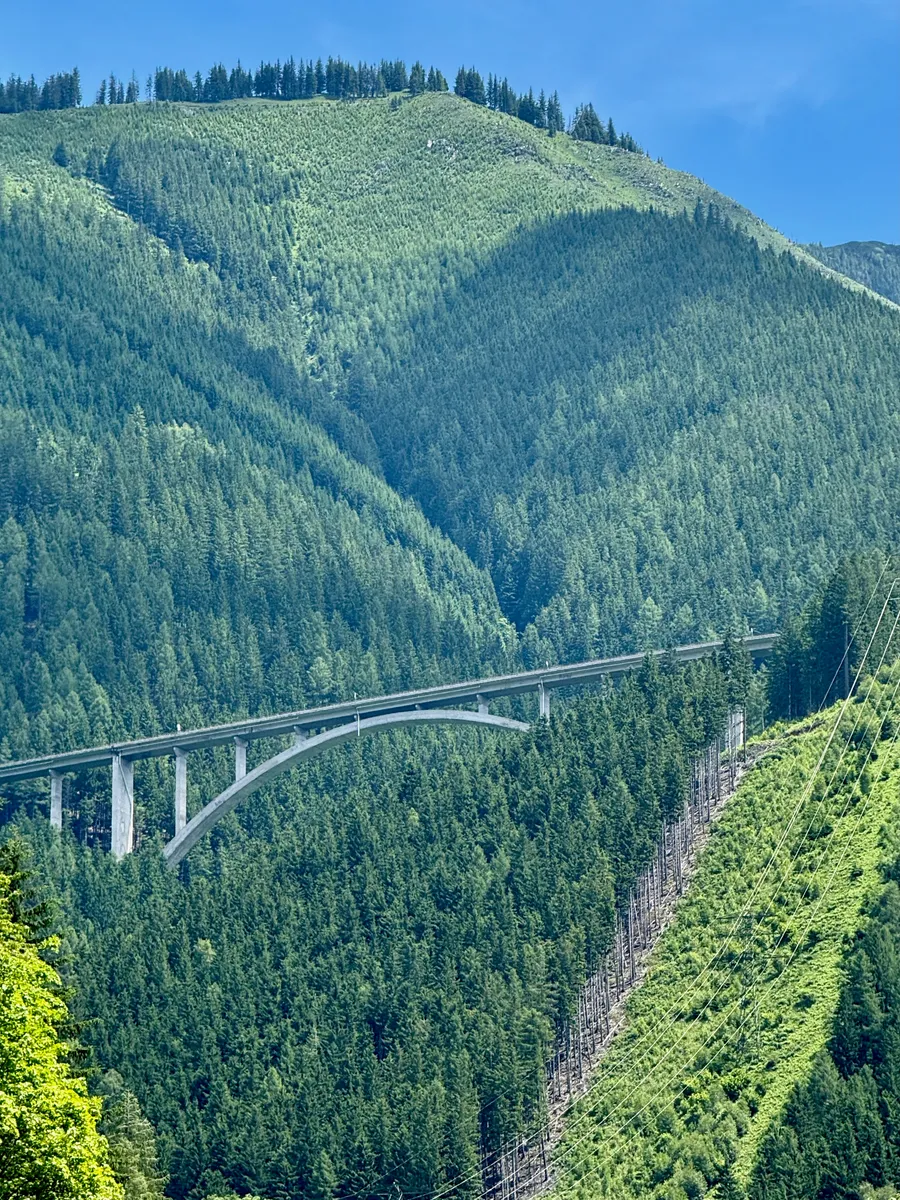
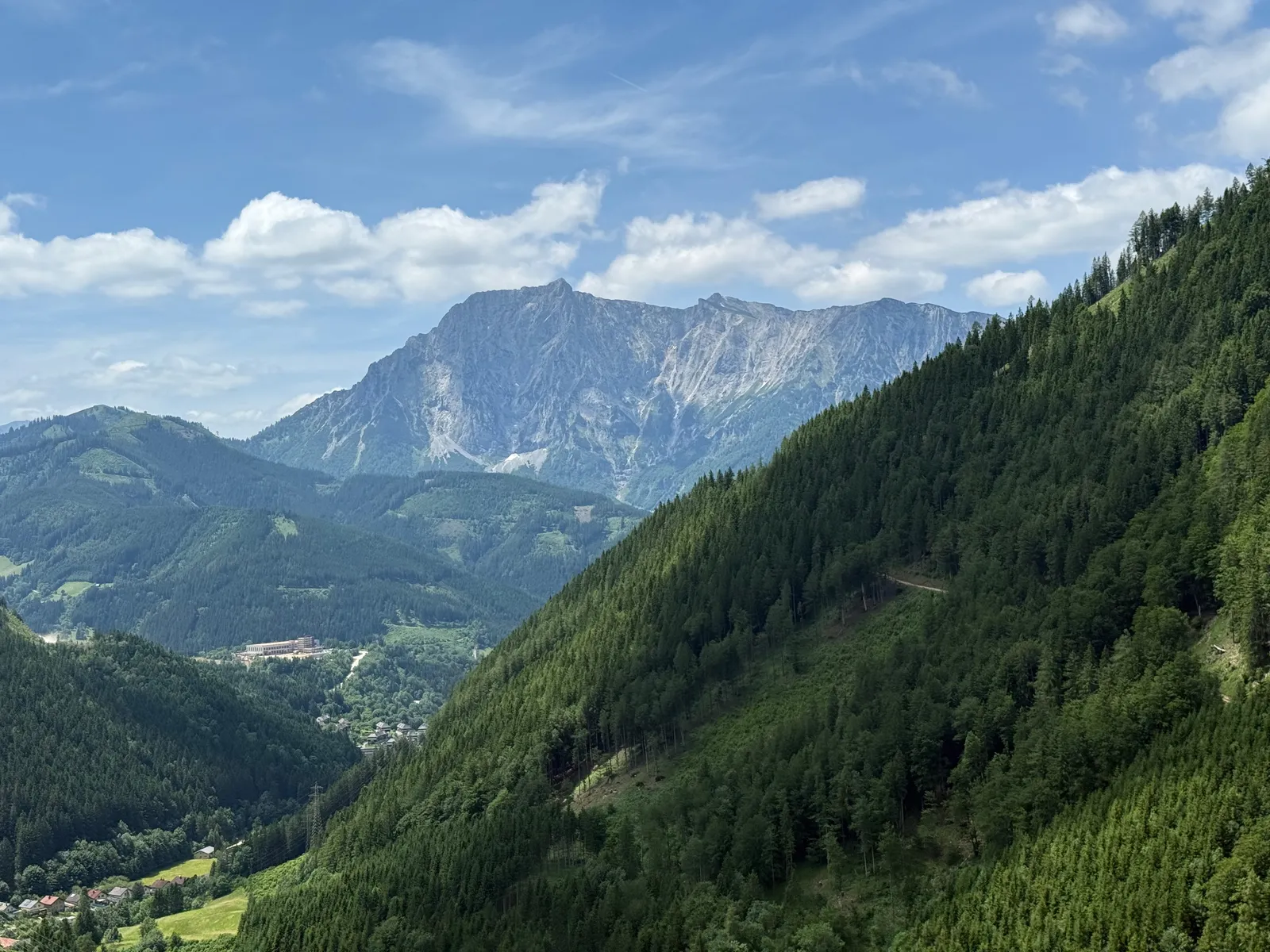
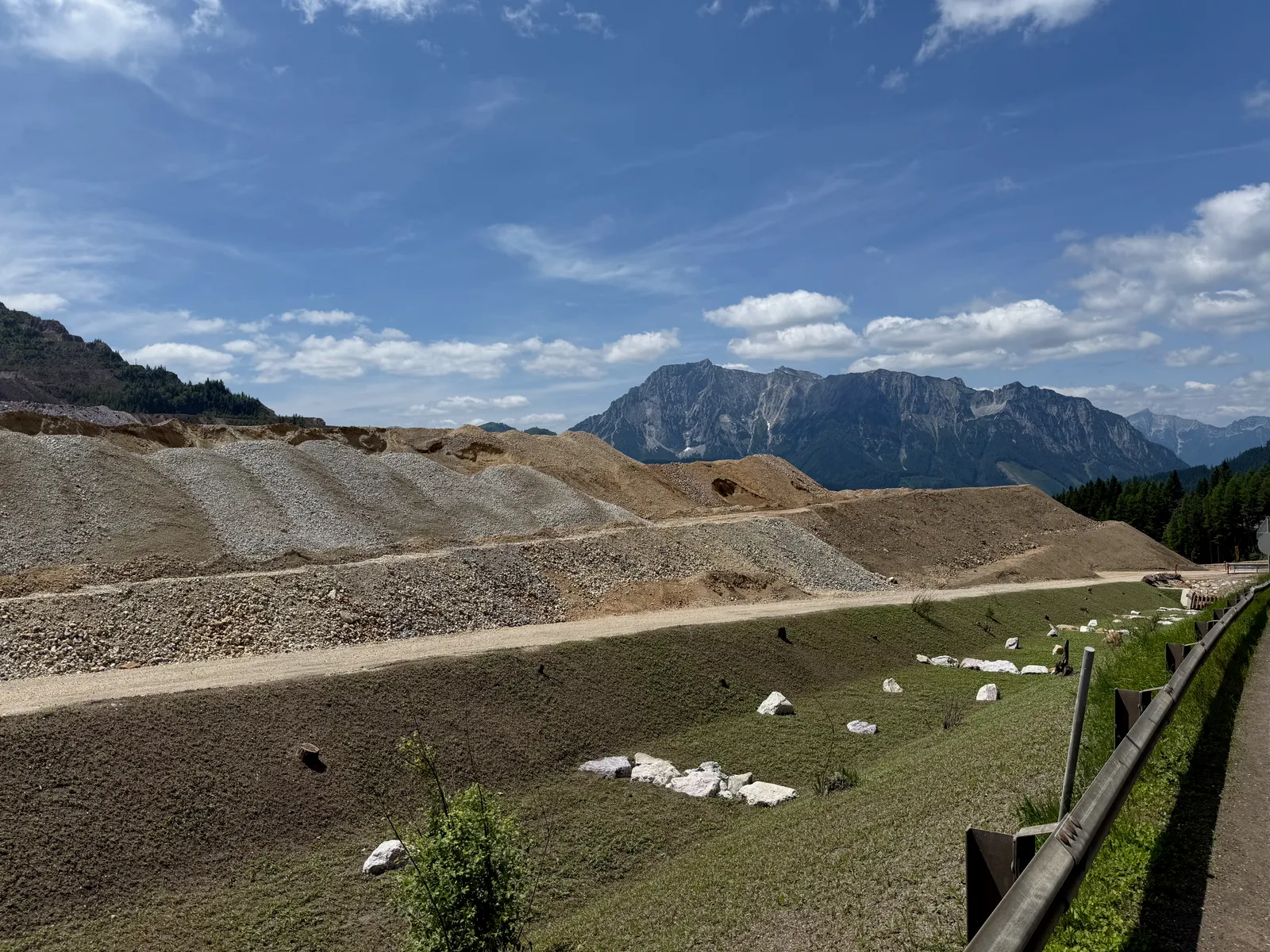
At the top, the road curved sharply left, abandoning the jagged mountains and cutting through the desolate upper levels of the quarry. I stopped at a red light for shuttle-controlled traffic, watching workers unload the enormous haul trucks. Tiny figures in a cathedral of stone and machinery.
When the light turned green, I let a few cars pass, then launched forward, half-sprinting to keep with their flow. The pass came quickly, and soon it was time to descend. The road stretched wide and perfectly smooth. A playground for gravity. I tucked low, stabilizing the bike with my knees as the speed built — 60, 65, 70 — topping out at 80 kilometers per hour before easing into the village below, exhilarated but calm.
The final kilometers felt like a quiet epilogue. A lazy roll along the Mur valley between Leoben and Bruck an der Mur — part narrow cycle paths through towns, part silent roads tracing the canal. The anticipation of the train station carried me forward more than the pedals did. Less than an hour after entering the valley, I sat on the platform, sunbathing in the heavy afternoon heat, ticket glowing softly on my phone. The Alps were behind me now, but their echo still hummed somewhere inside.
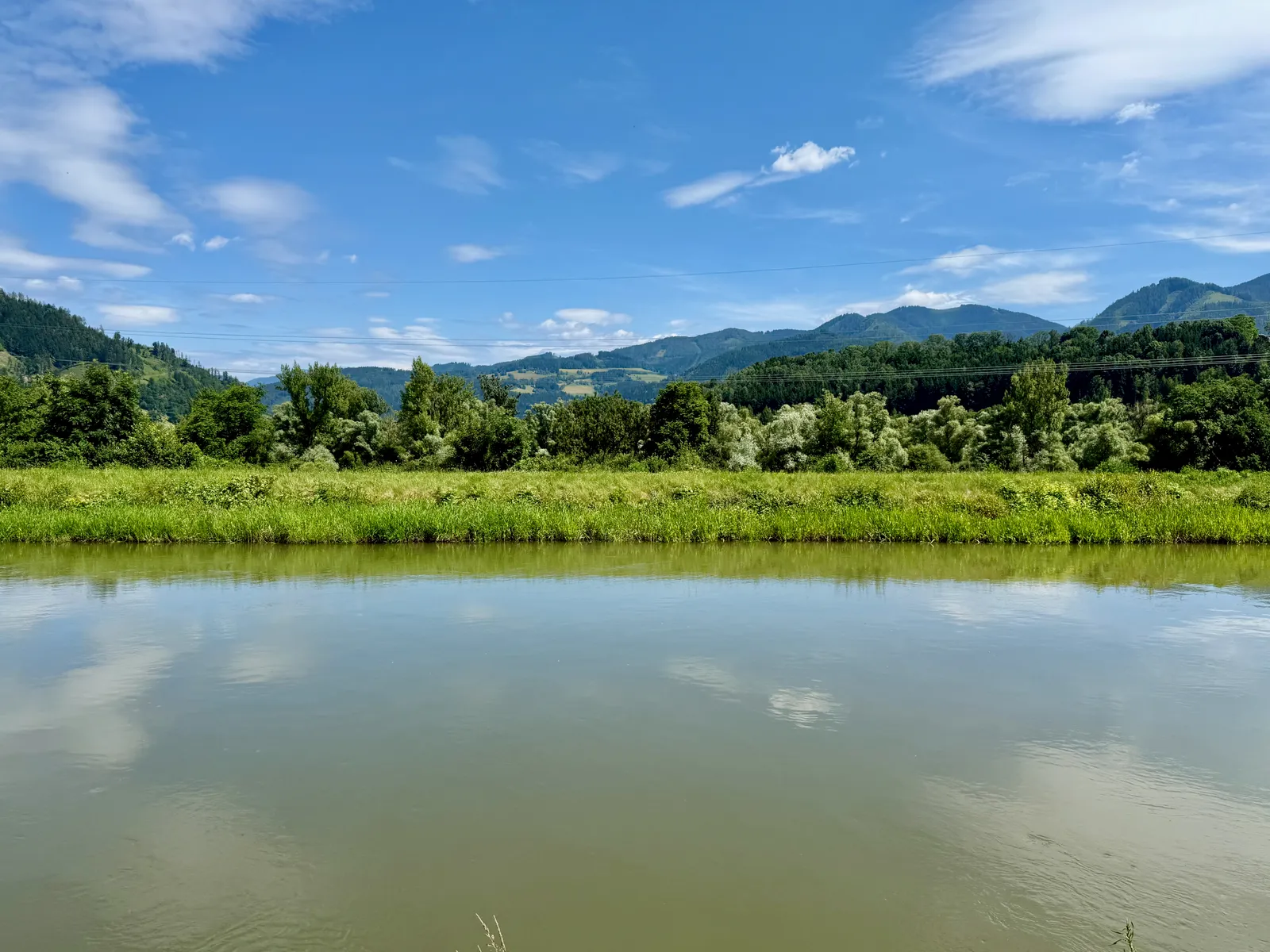
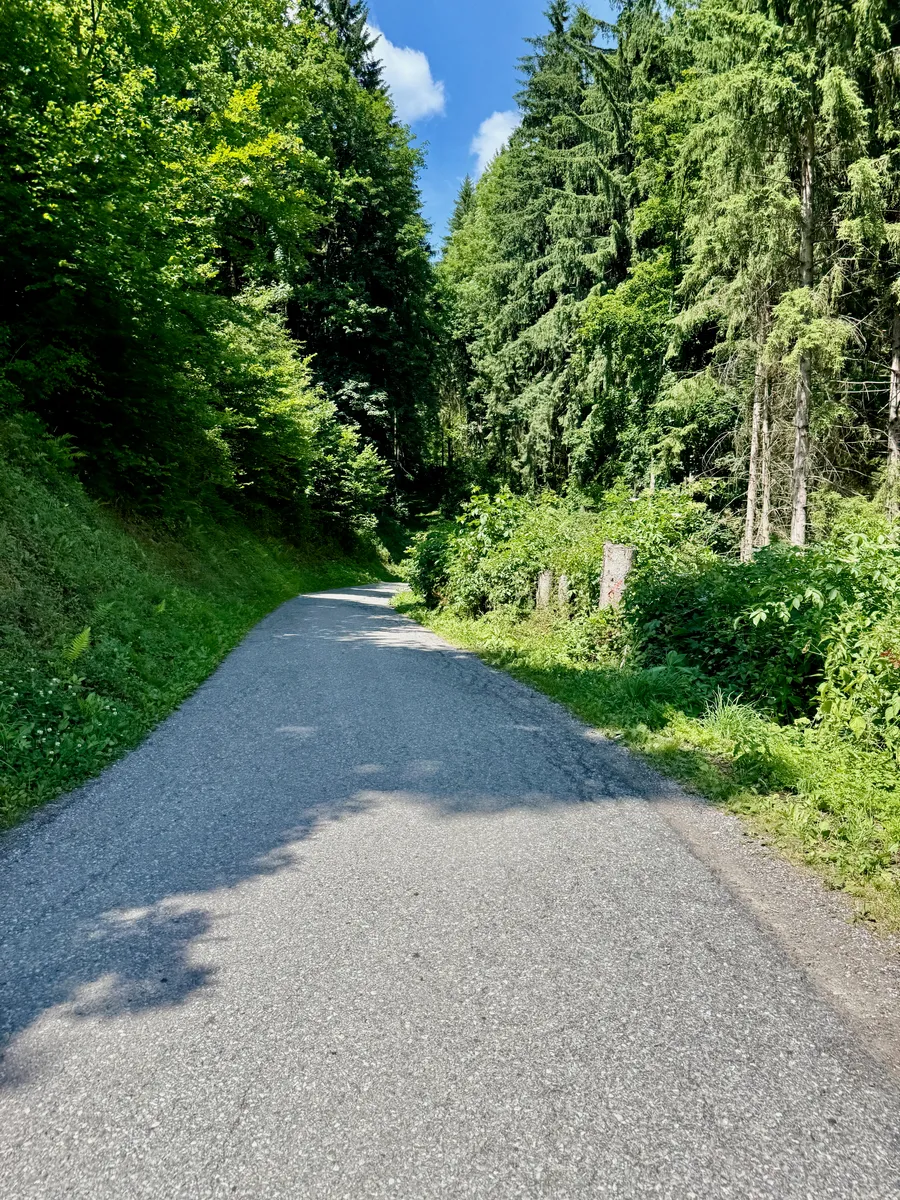
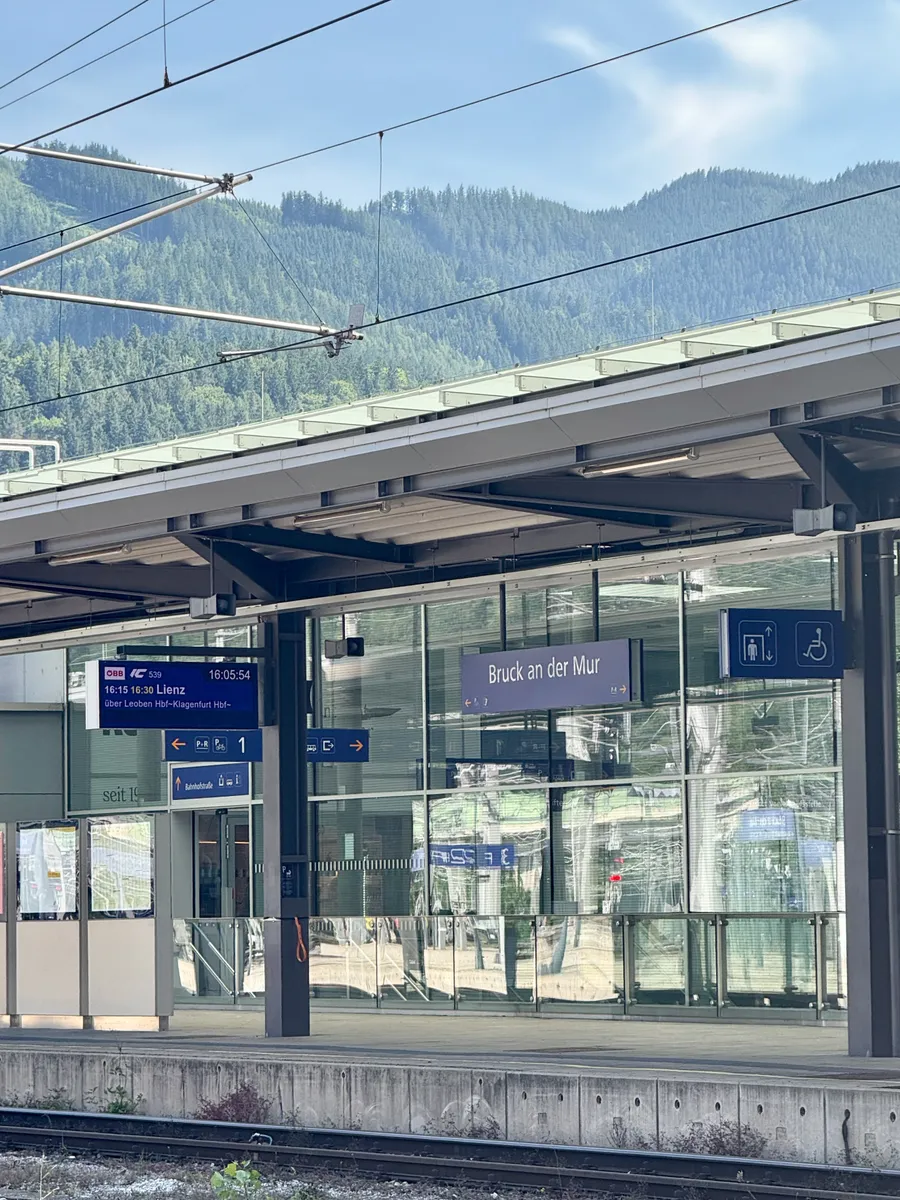
Epilogue
After a prolonged struggle to fit all the bikes into the narrow compartment of the train car, I finally collapsed into a seat. For a while, I busied myself with the familiar ritual — scrolling through the photos of the day, selecting the best frames, tweaking light and color as if to preserve the essence of what I had just lived. But it didn’t last. My focus faltered. My eyes, drawn by something quieter and deeper, drifted toward the window.
Outside, the fields of the Mürz valley streamed by in soft, blurred motion — a gentle but persistent reminder that I was leaving the mountains behind. Then the train began its slow climb along the Semmering line, the first regular gauge mountain railway in Europe. Watching it unfold was like witnessing a living monument to human persistence: rails curling gracefully around cliffs, gliding over slender viaducts, disappearing into dark tunnels only to emerge again into sudden light.
For the first time in days, there was nothing to do but watch. No photos, no scrolling, no need to move fast or chase anything. Just me, the quiet hum of the carriage, and the thin glass pane separating me from the world I had just conquered. The landscape passed like a farewell — fleeting, magnificent, serene.
I was glad to live the mountain train experience. It softened the sting of leaving the route unfinished, though only slightly. There was still a small ache, a whisper of unfinished business lingering at the edge of thought. But as the mountains receded and the train rolled onto the plains, speeding through the outskirts of Vienna, that whisper began to transform. By the time I caught my reflection in the window — sunburnt, tired, but content — a new thought had already taken root.
A new plan.
Strava - Day 3 - Innerkrems Pass, Tauernpass
Strava - Rest day
Strava - Day 4 - Admont, Gesäuse, Präbichl

Previous post Destination Tauern - Part 1

